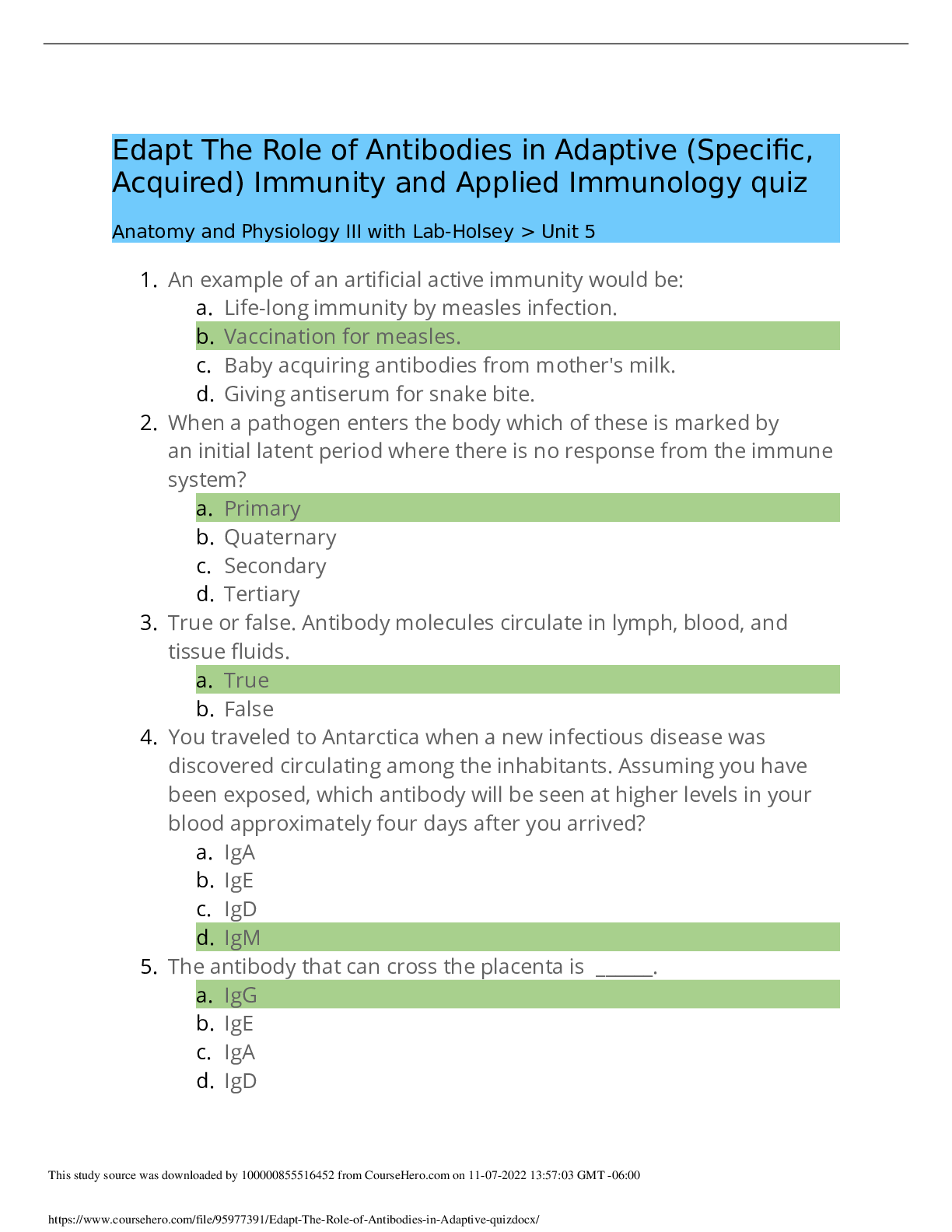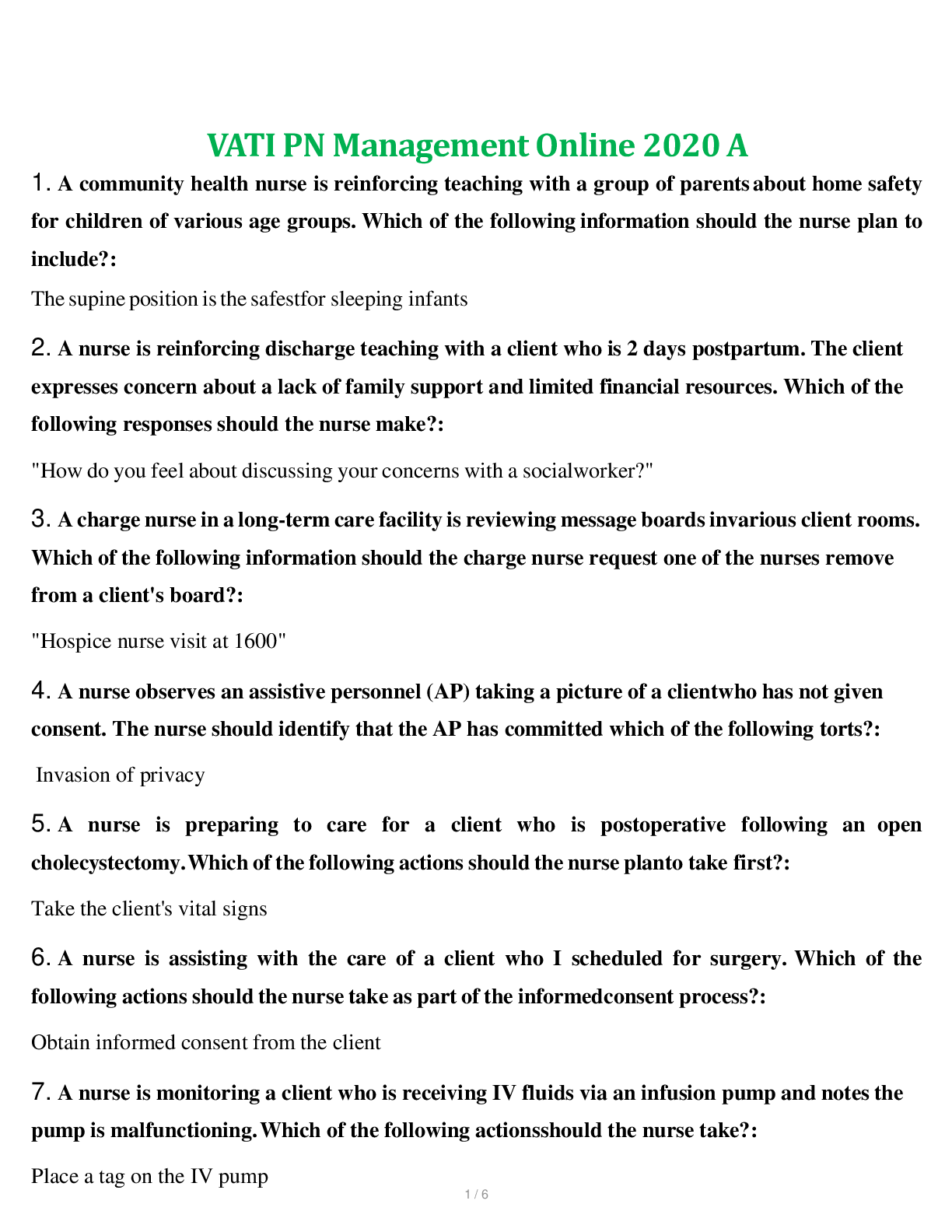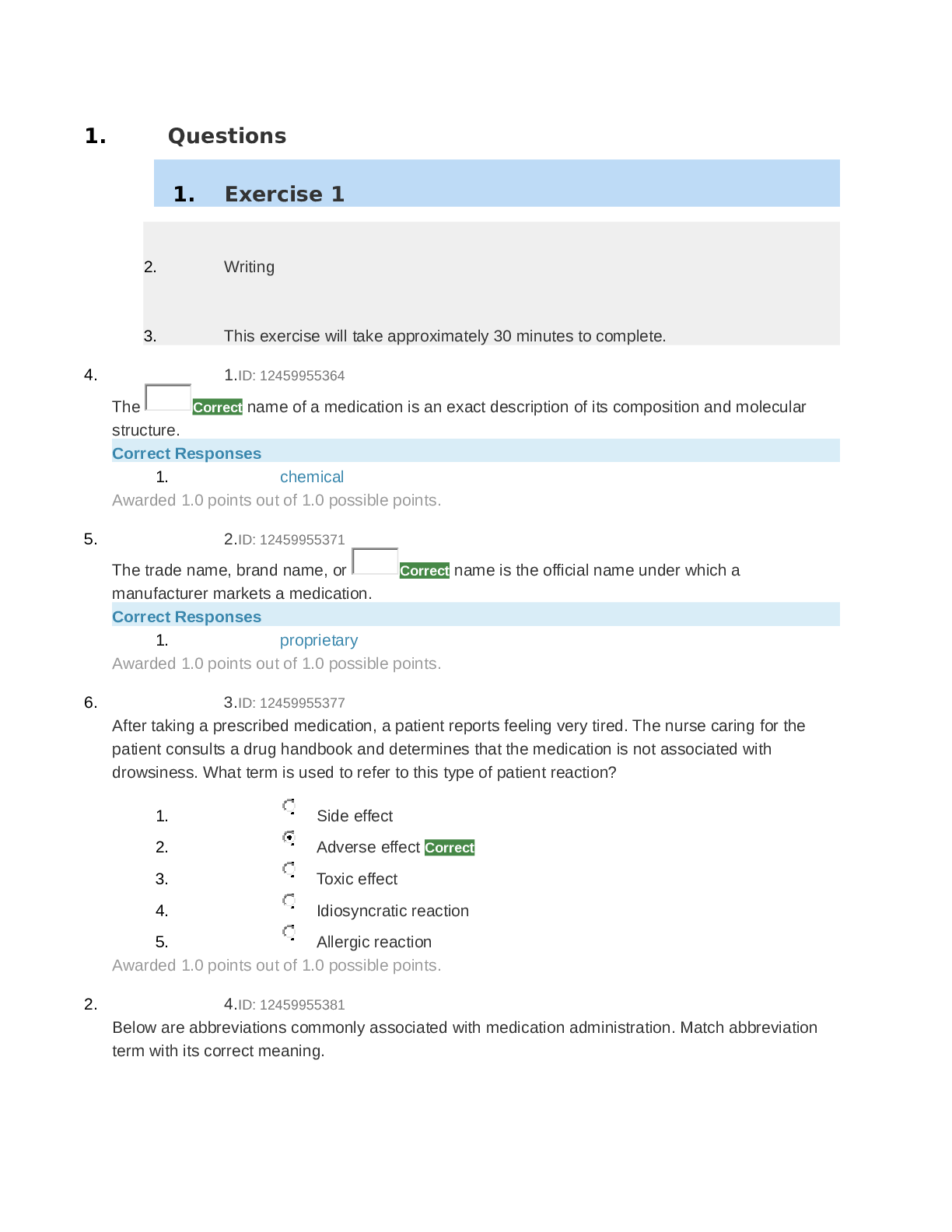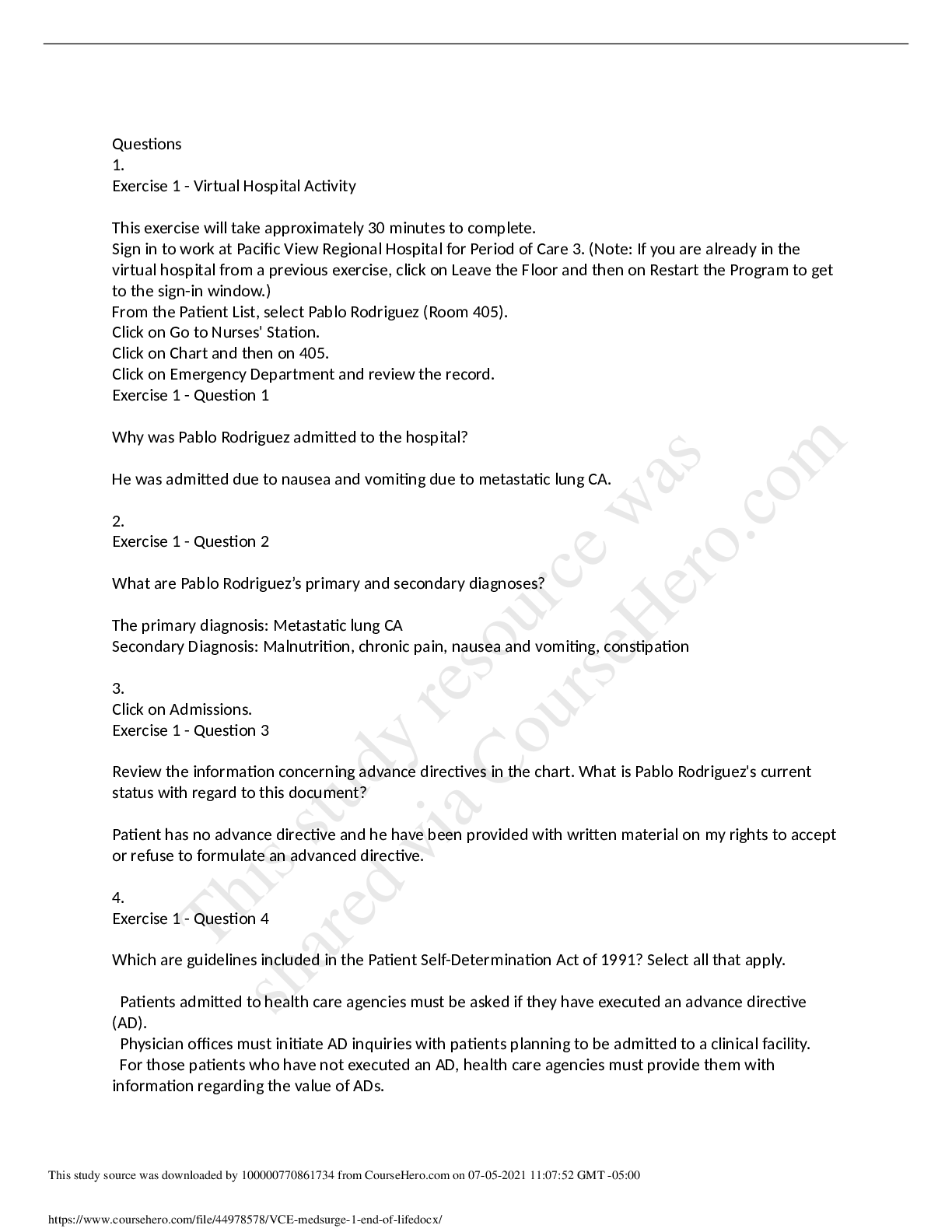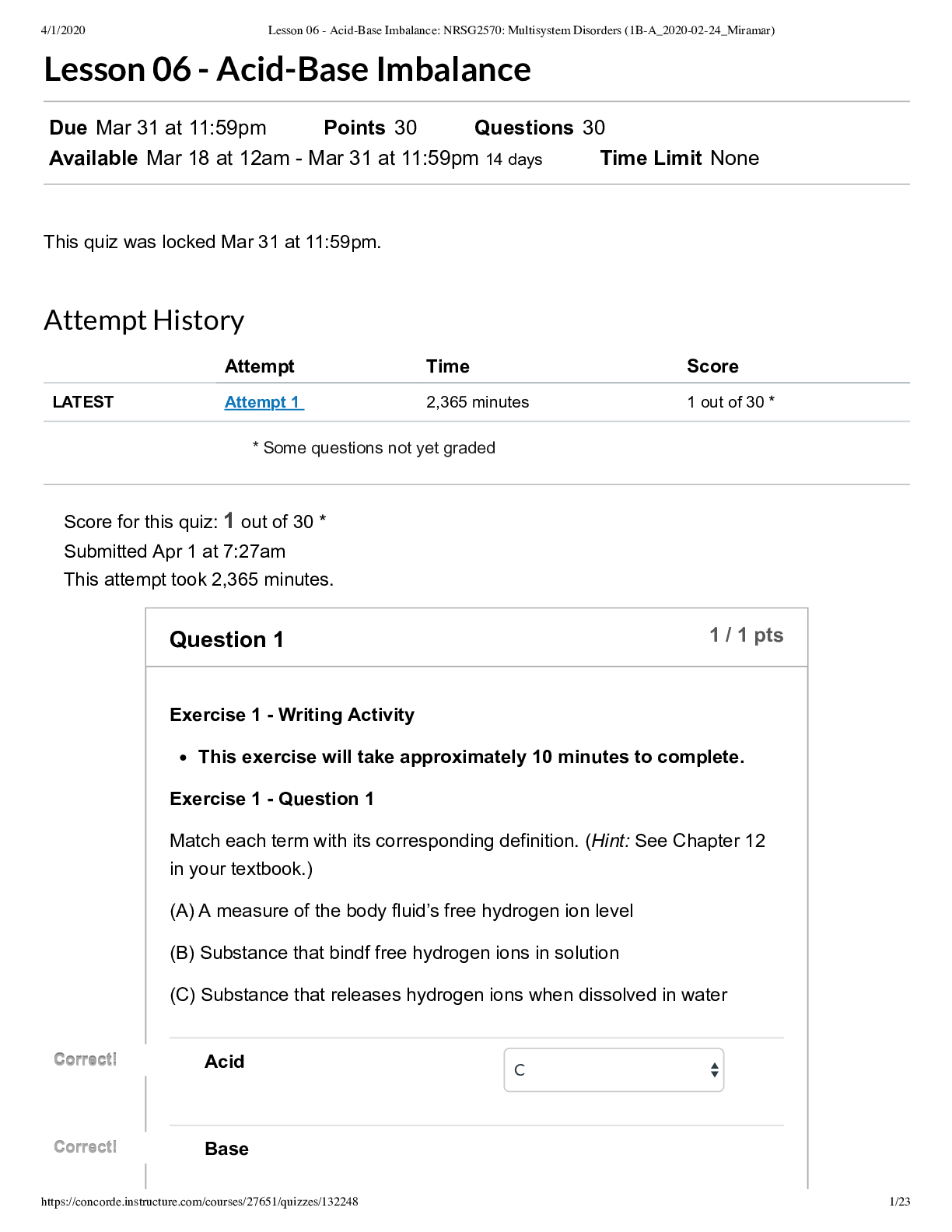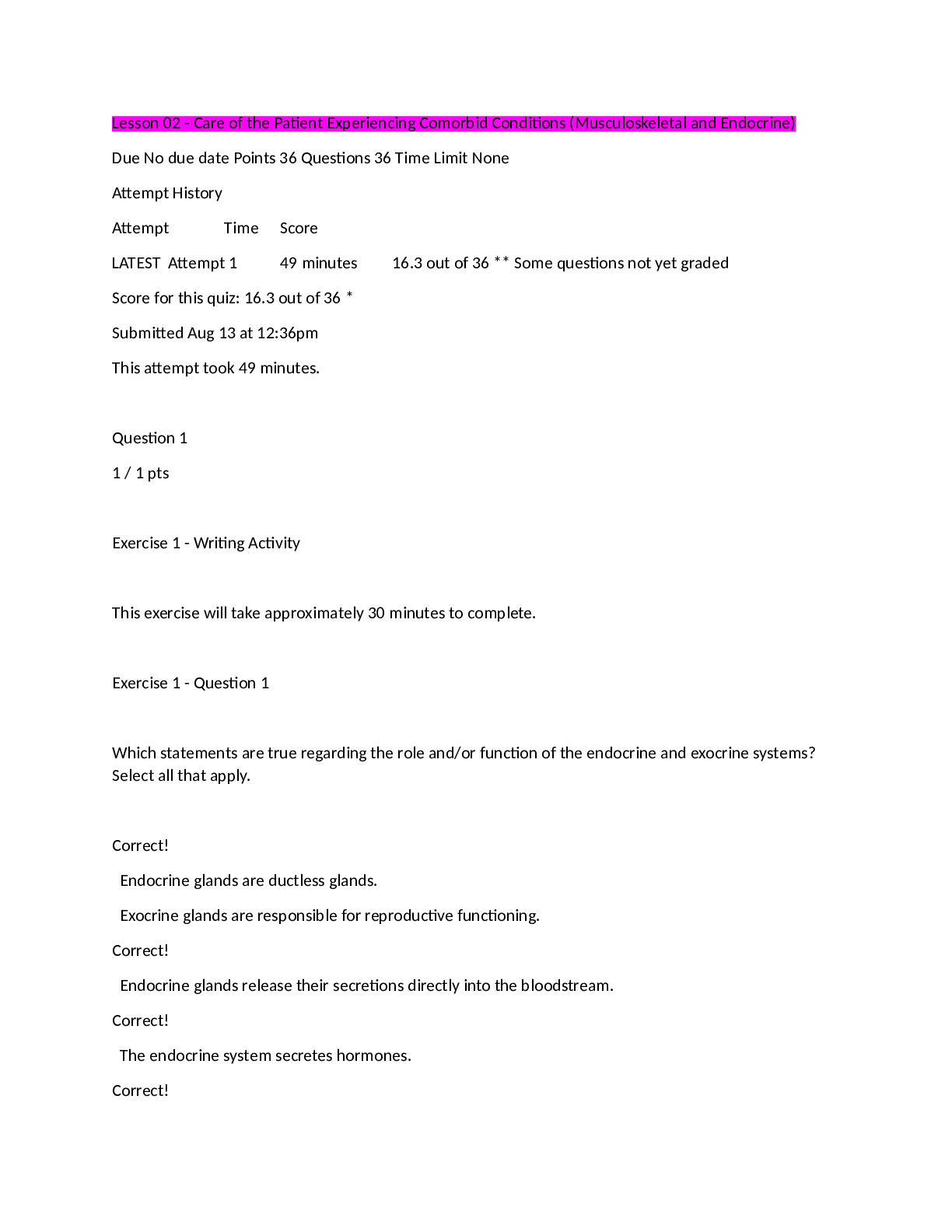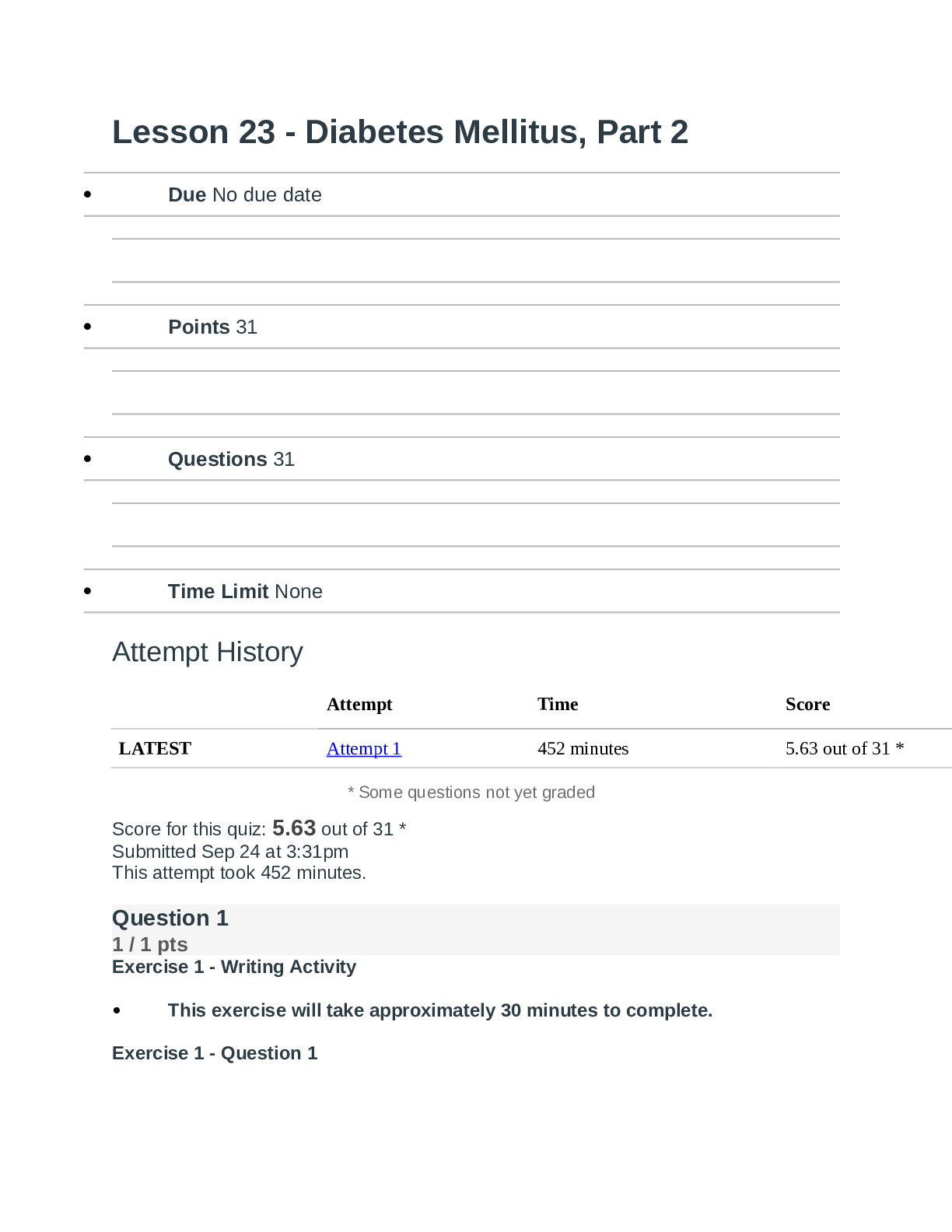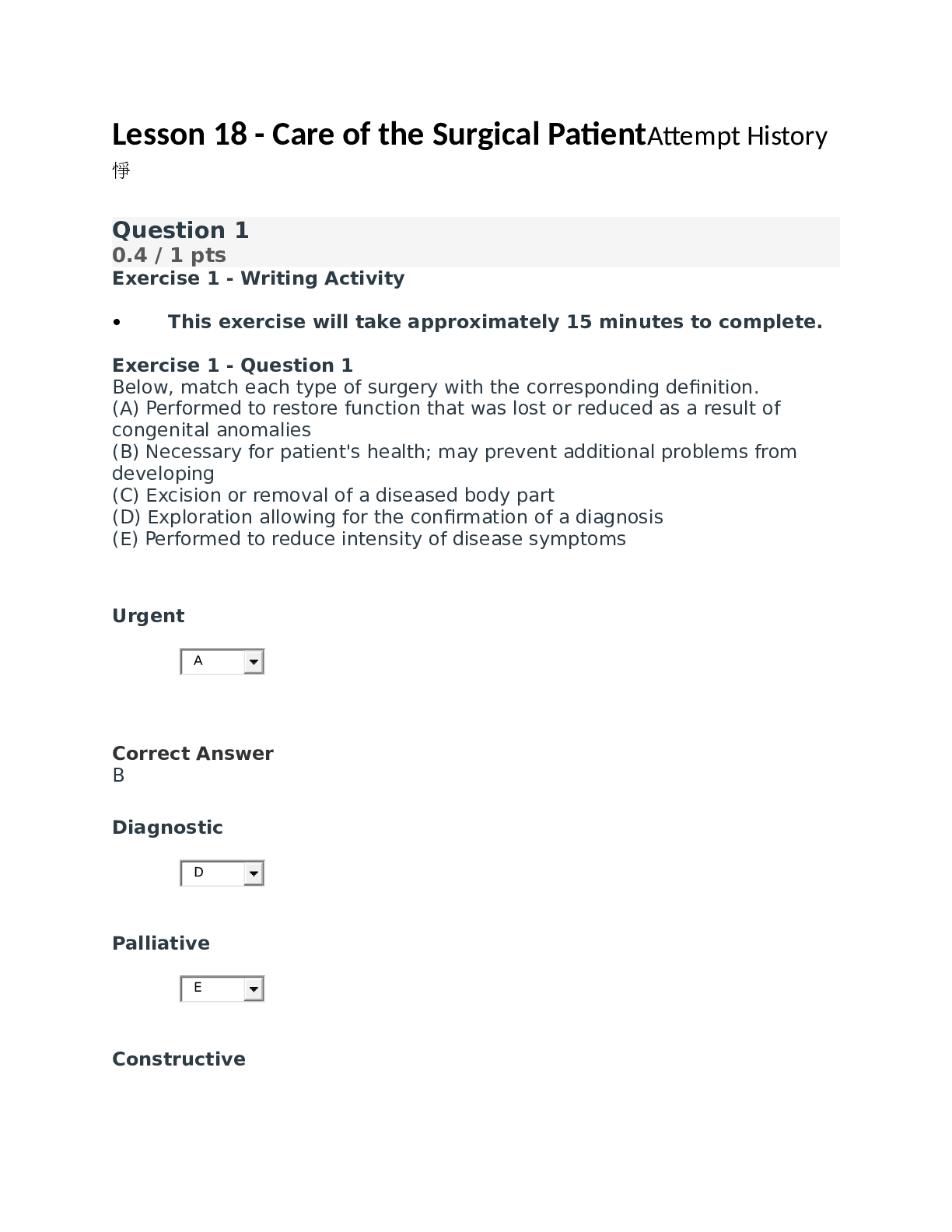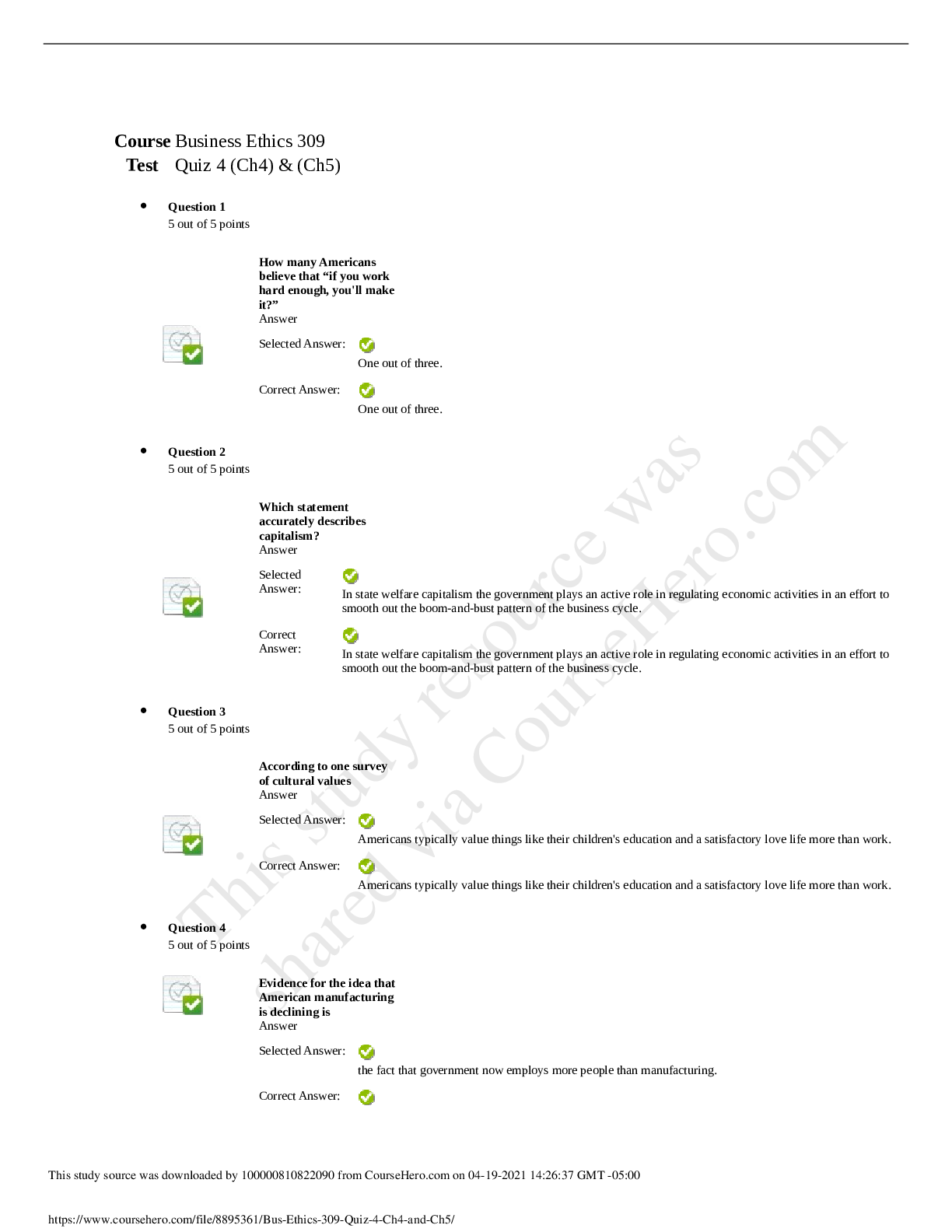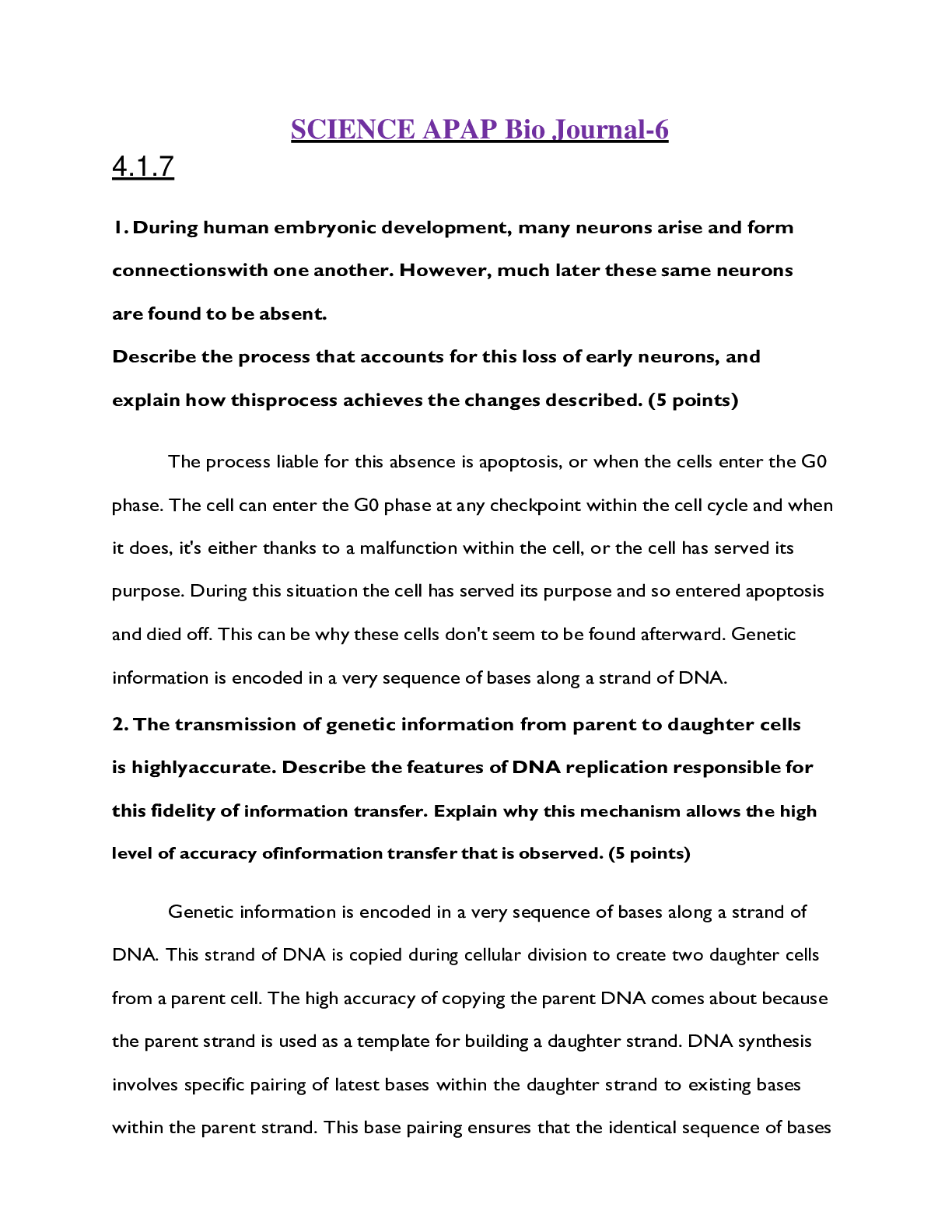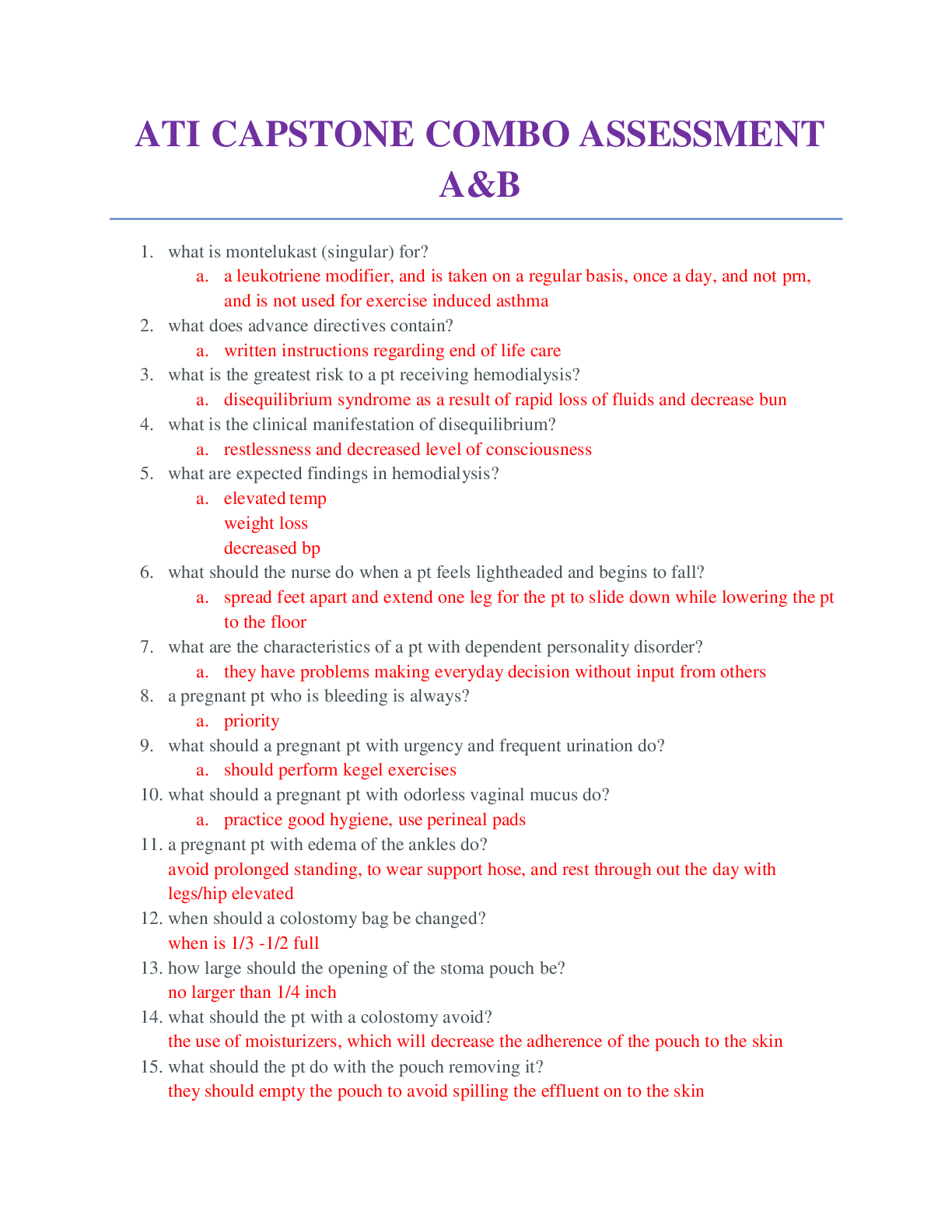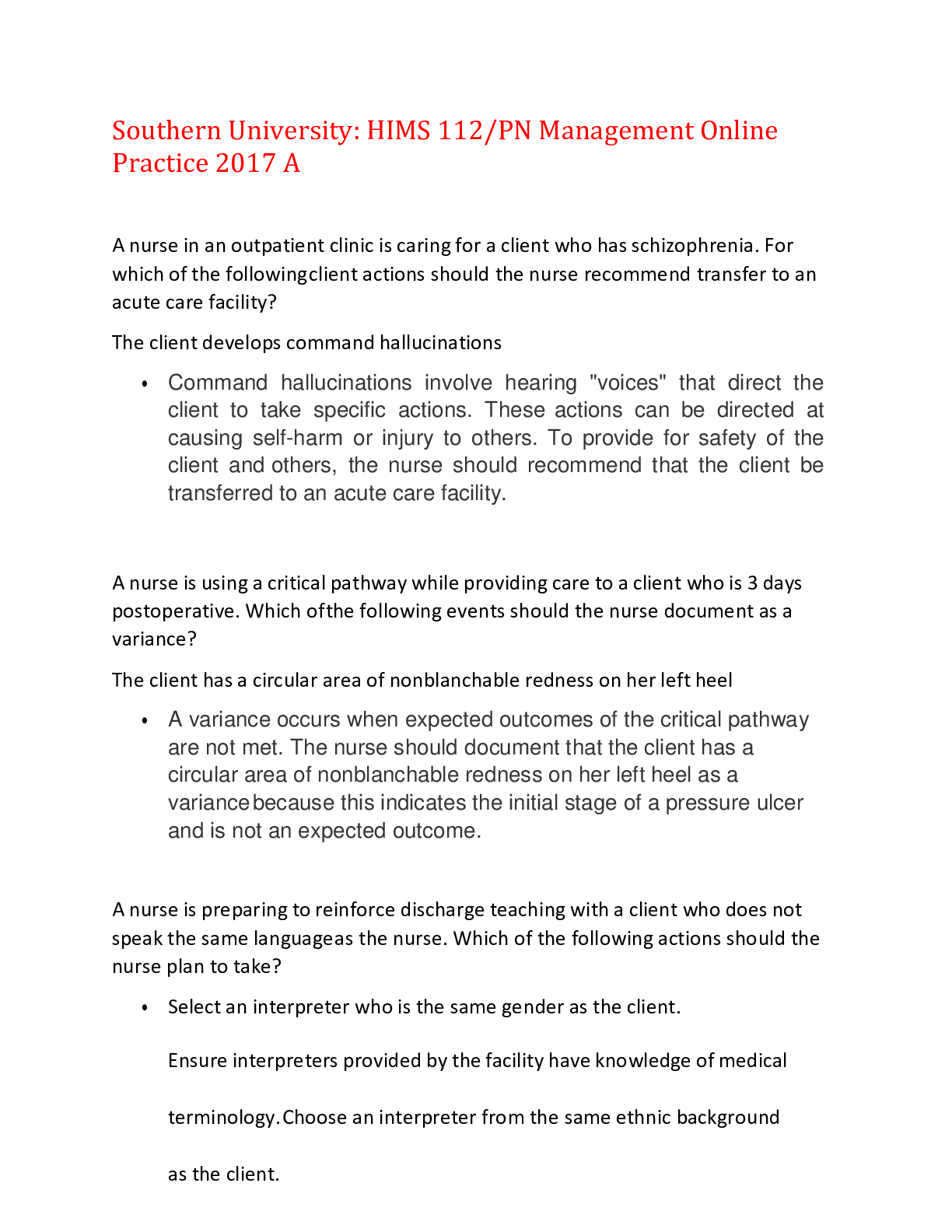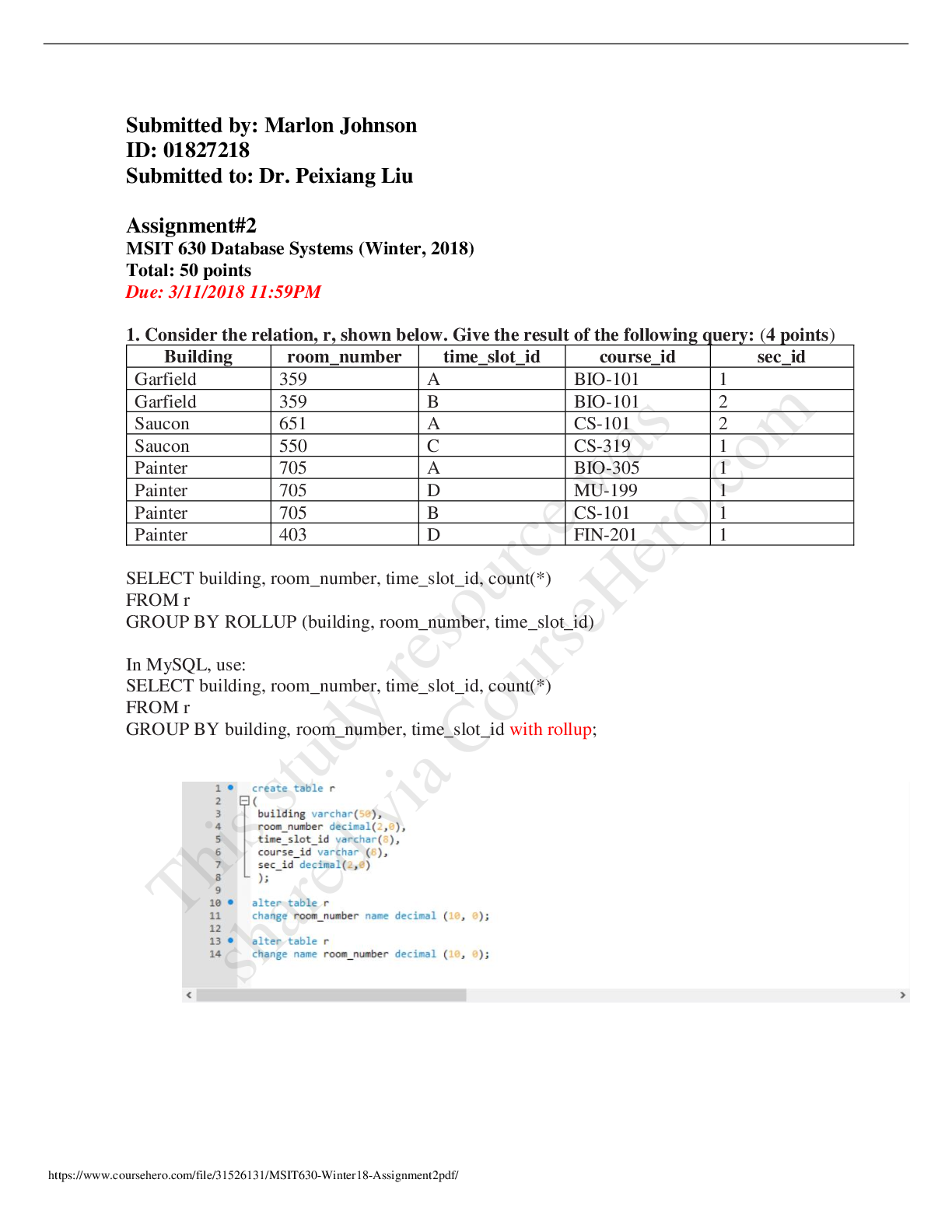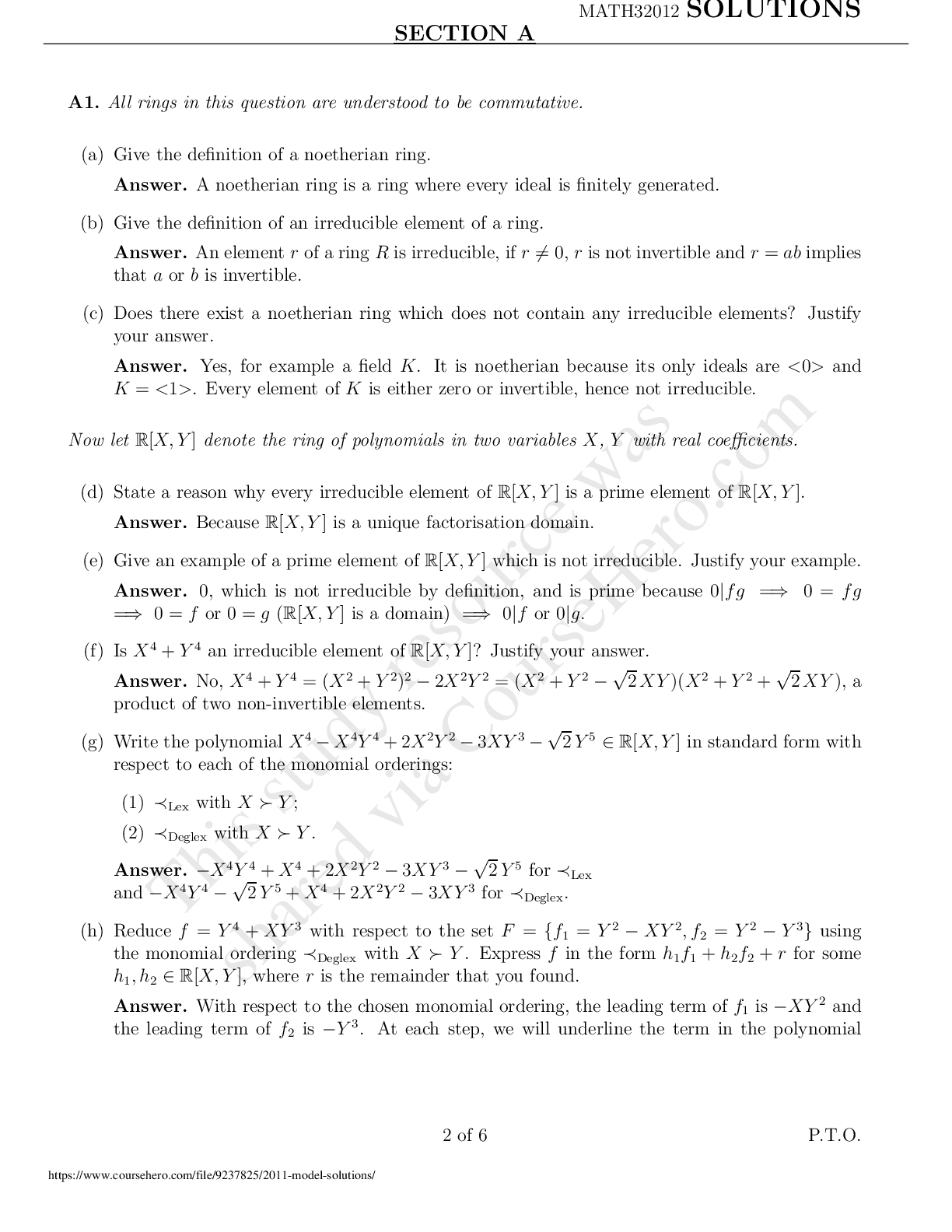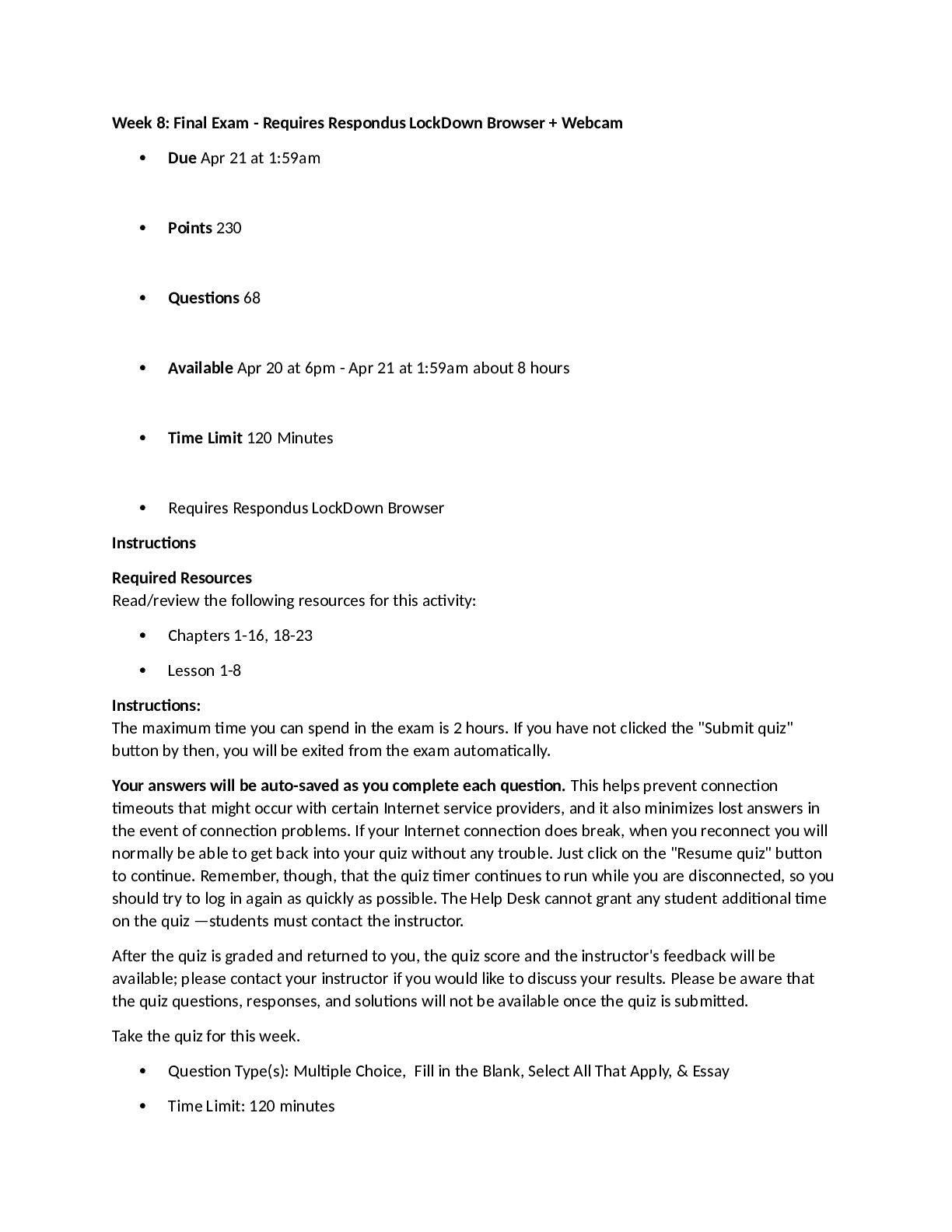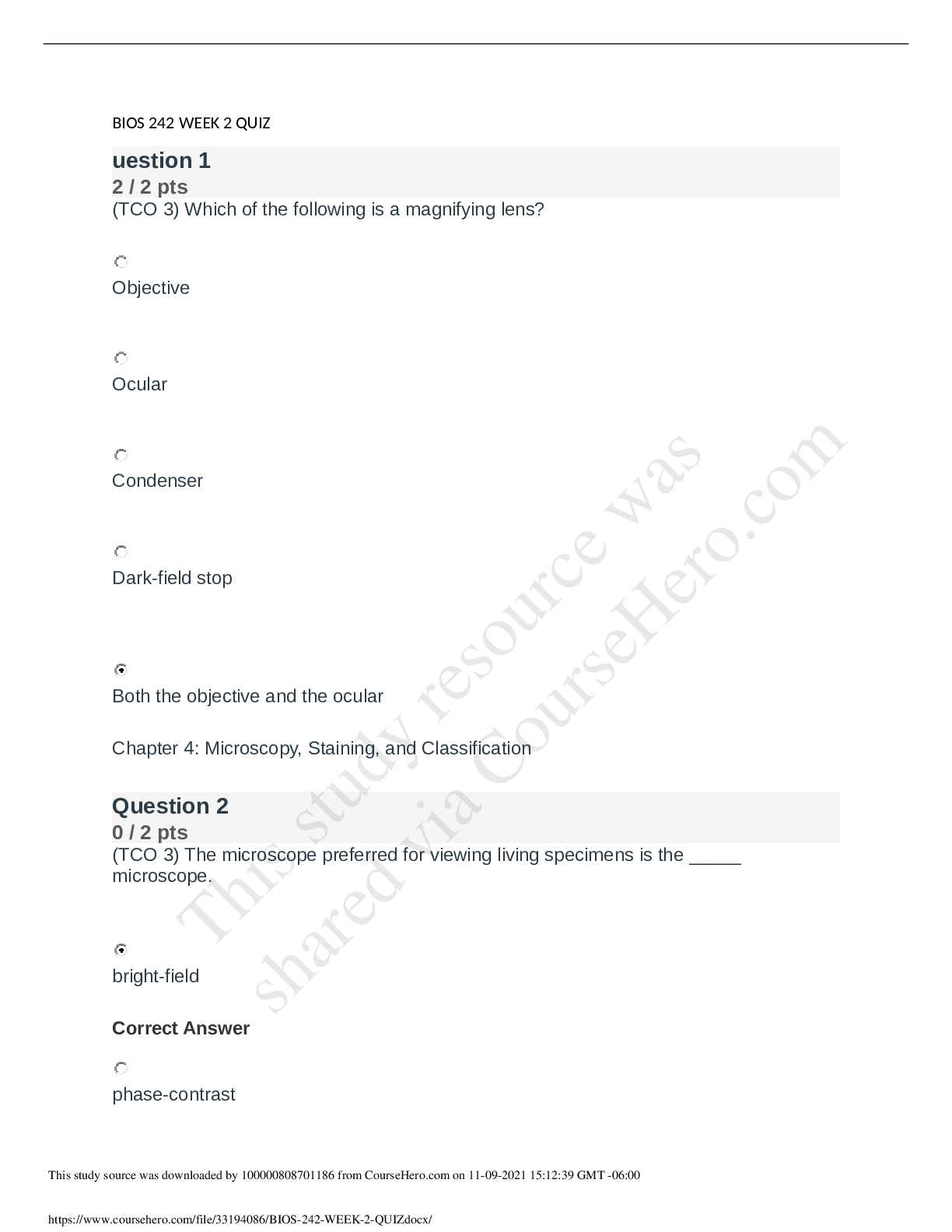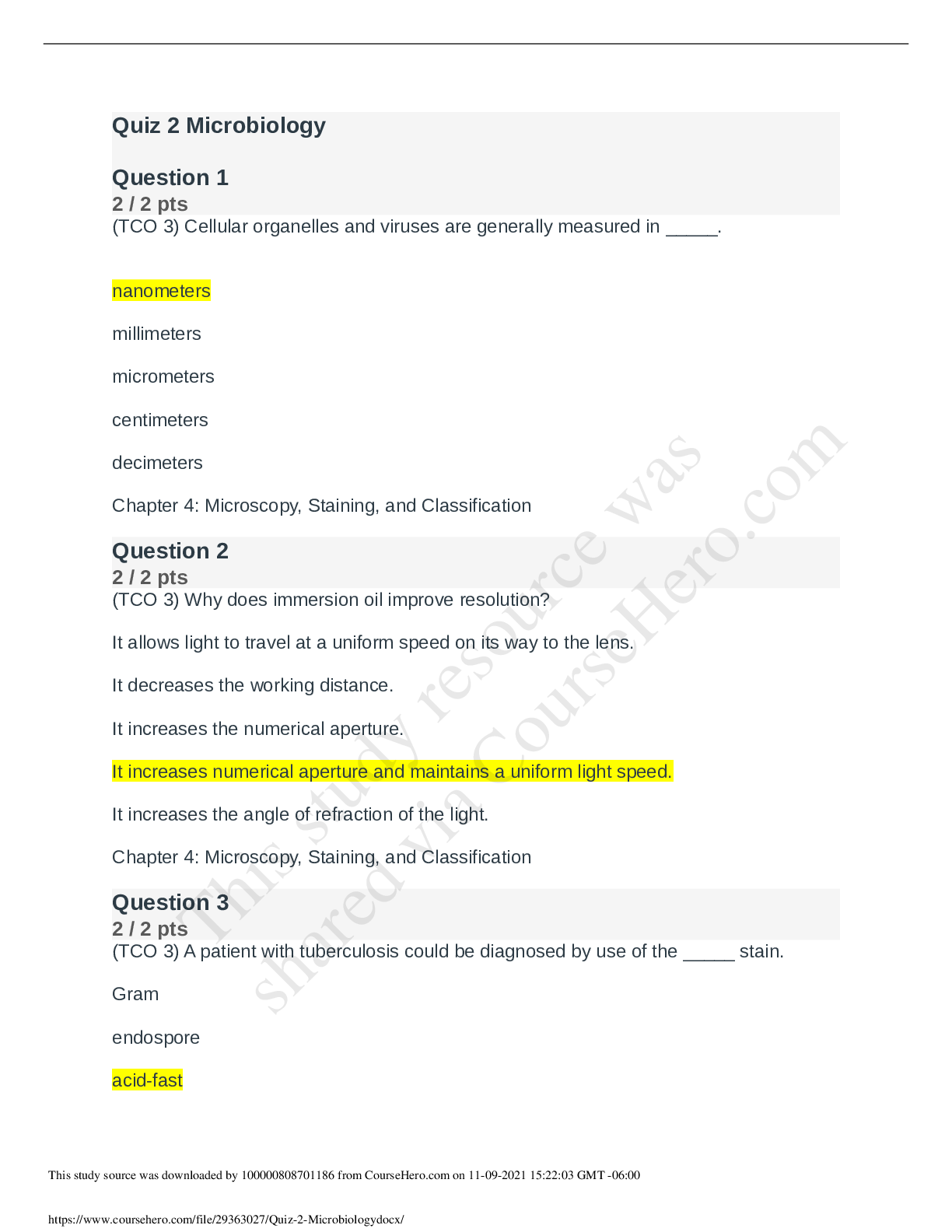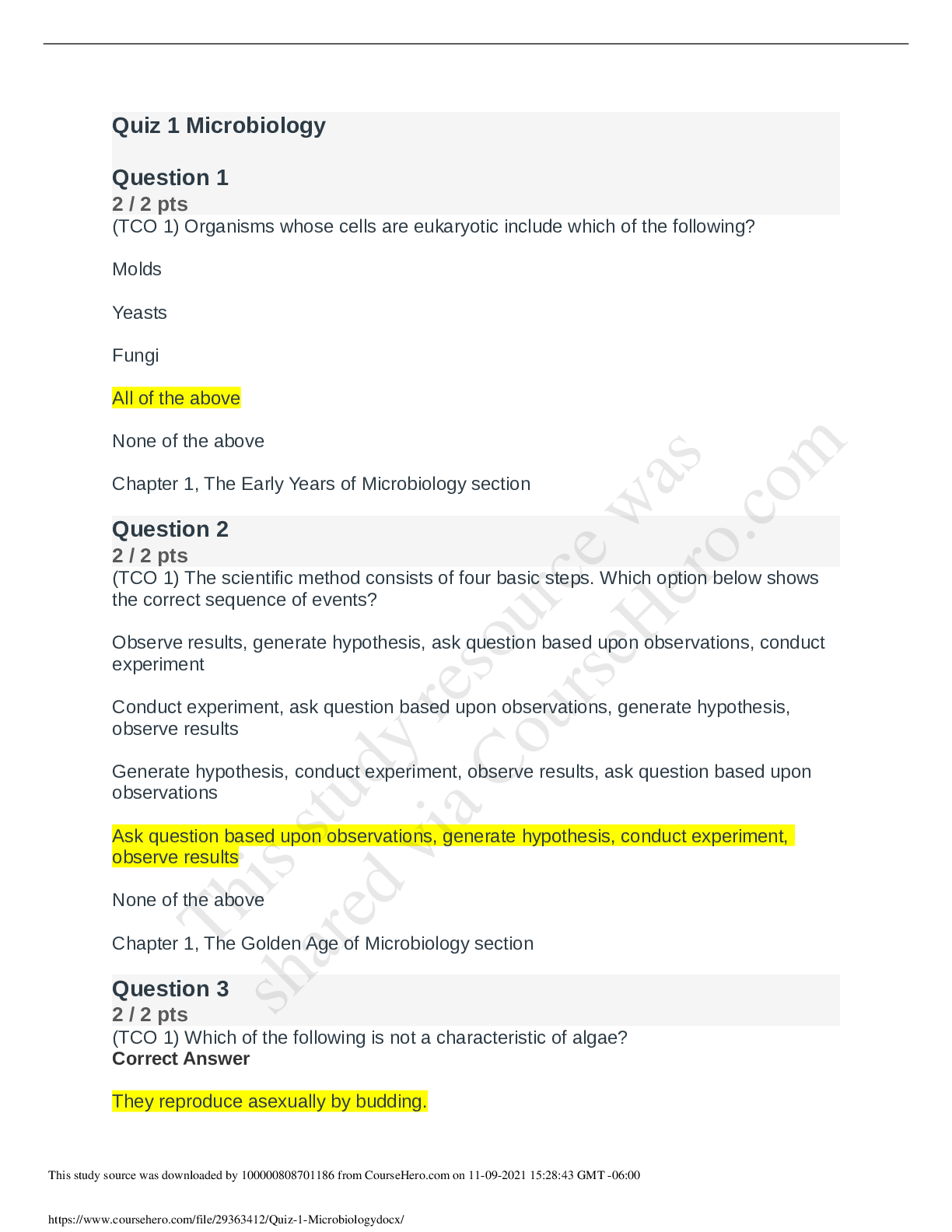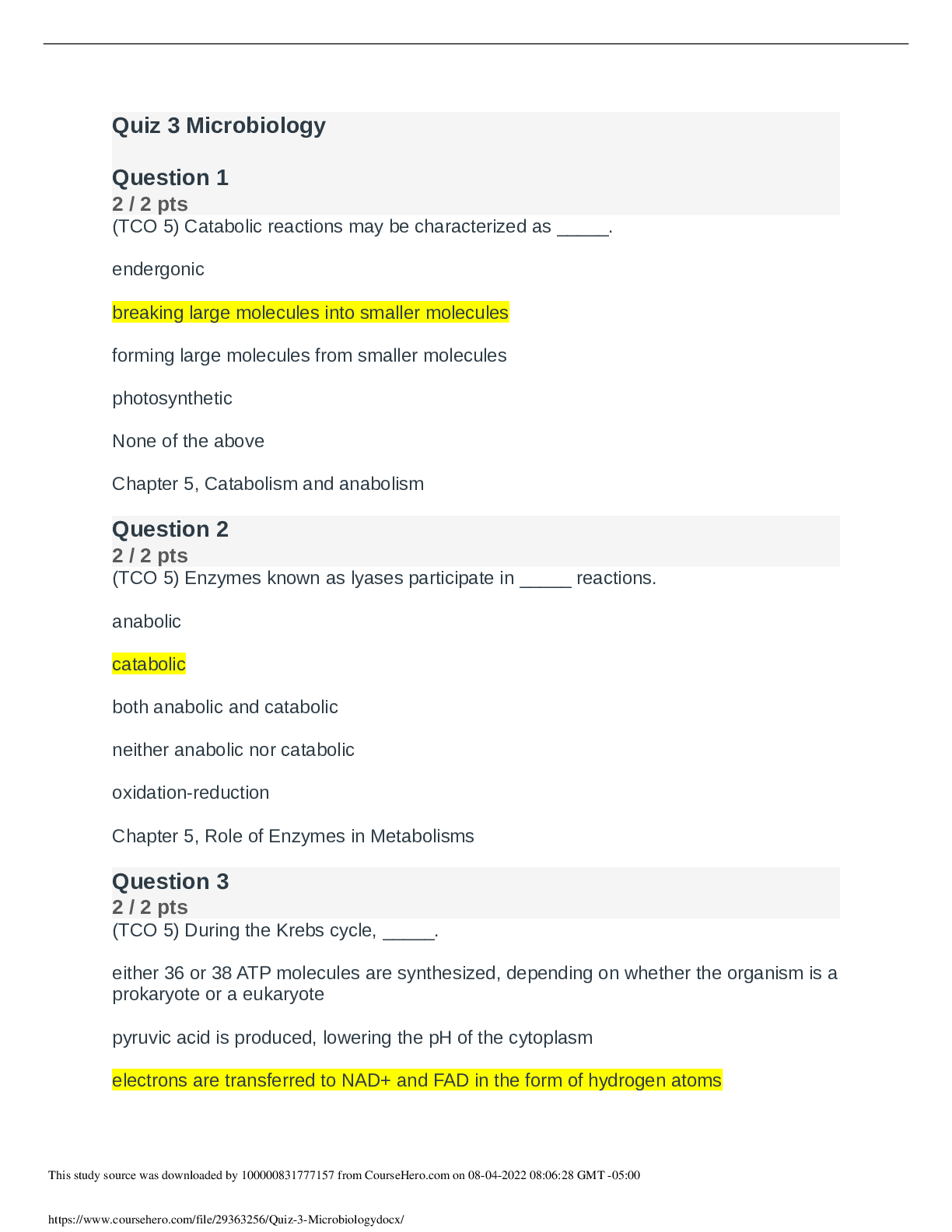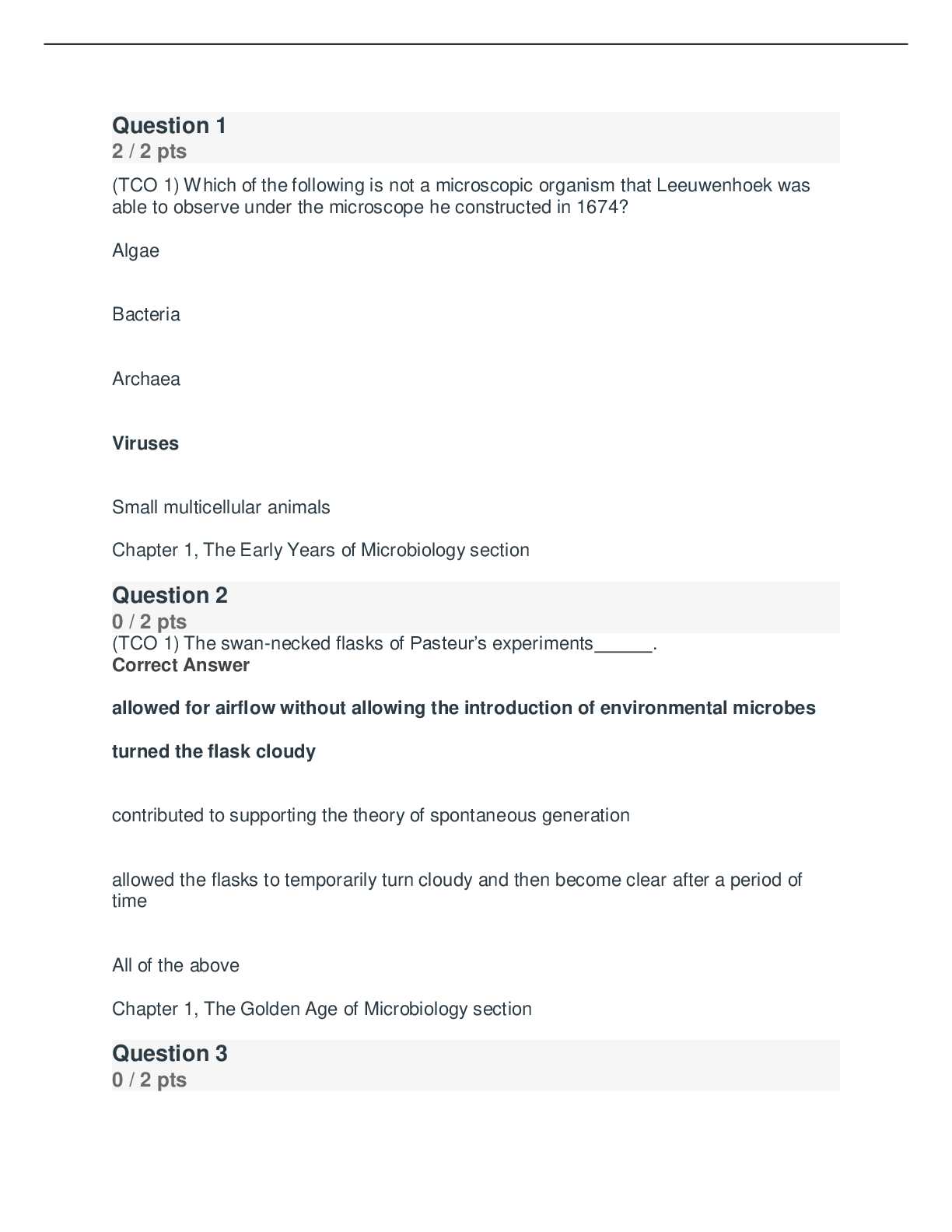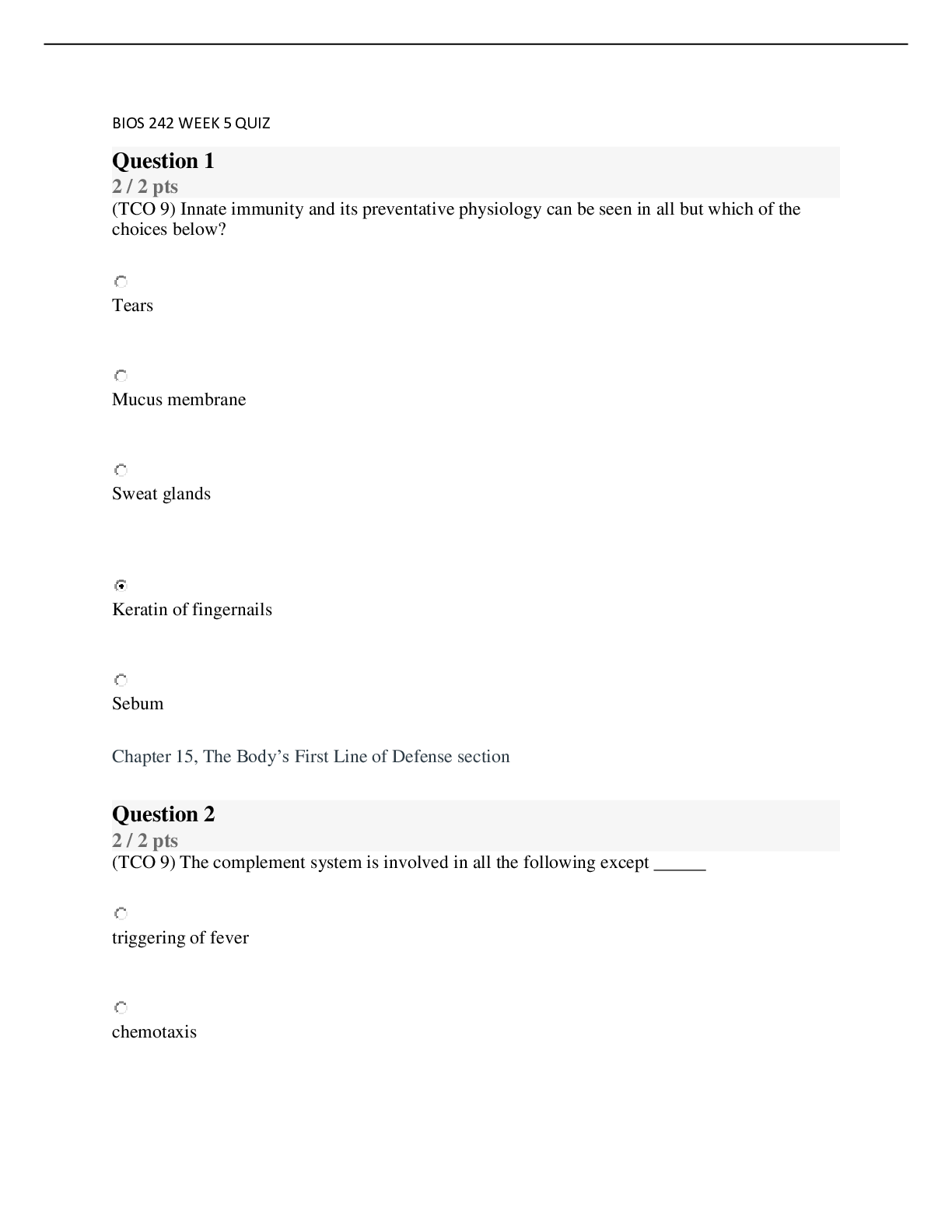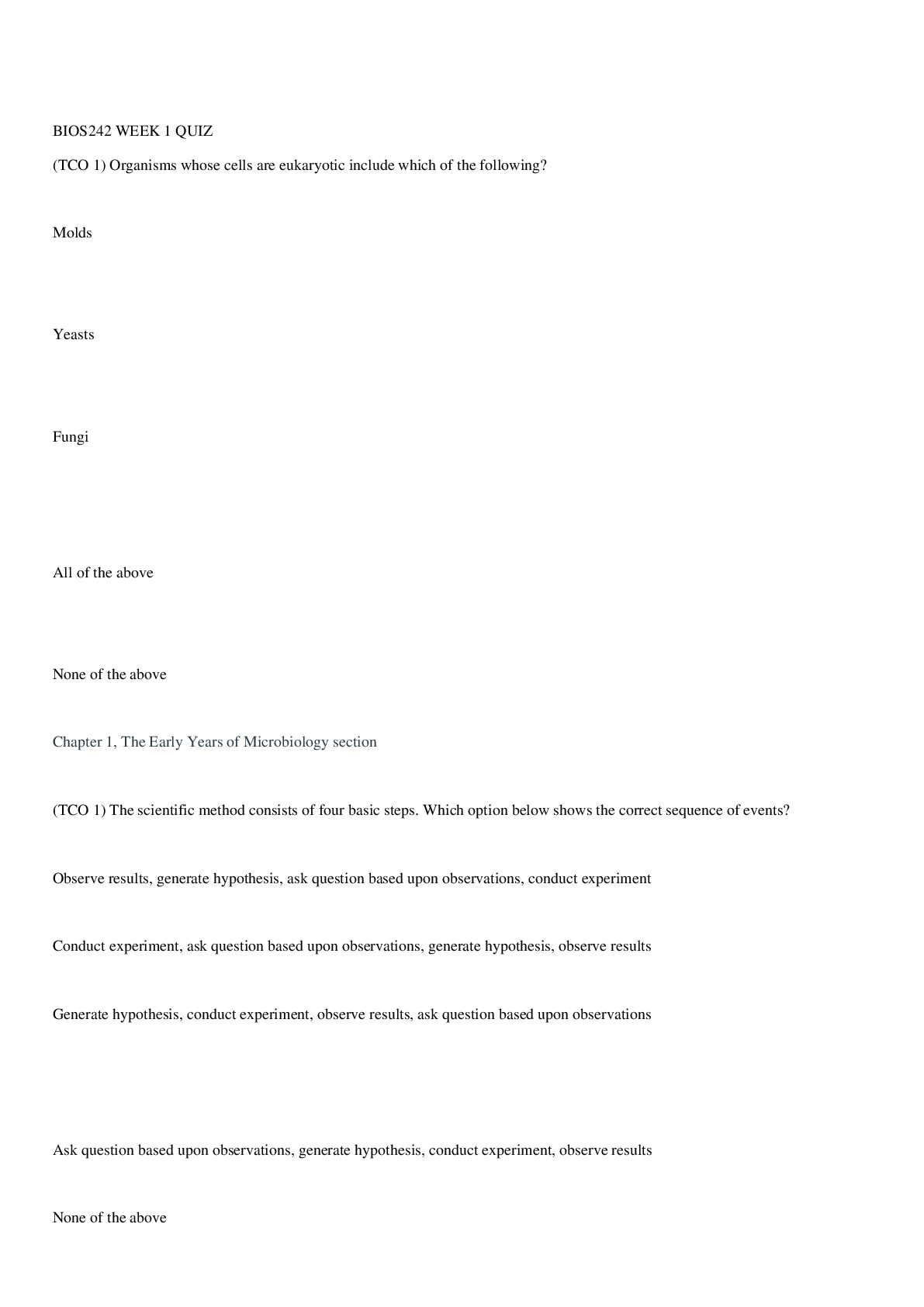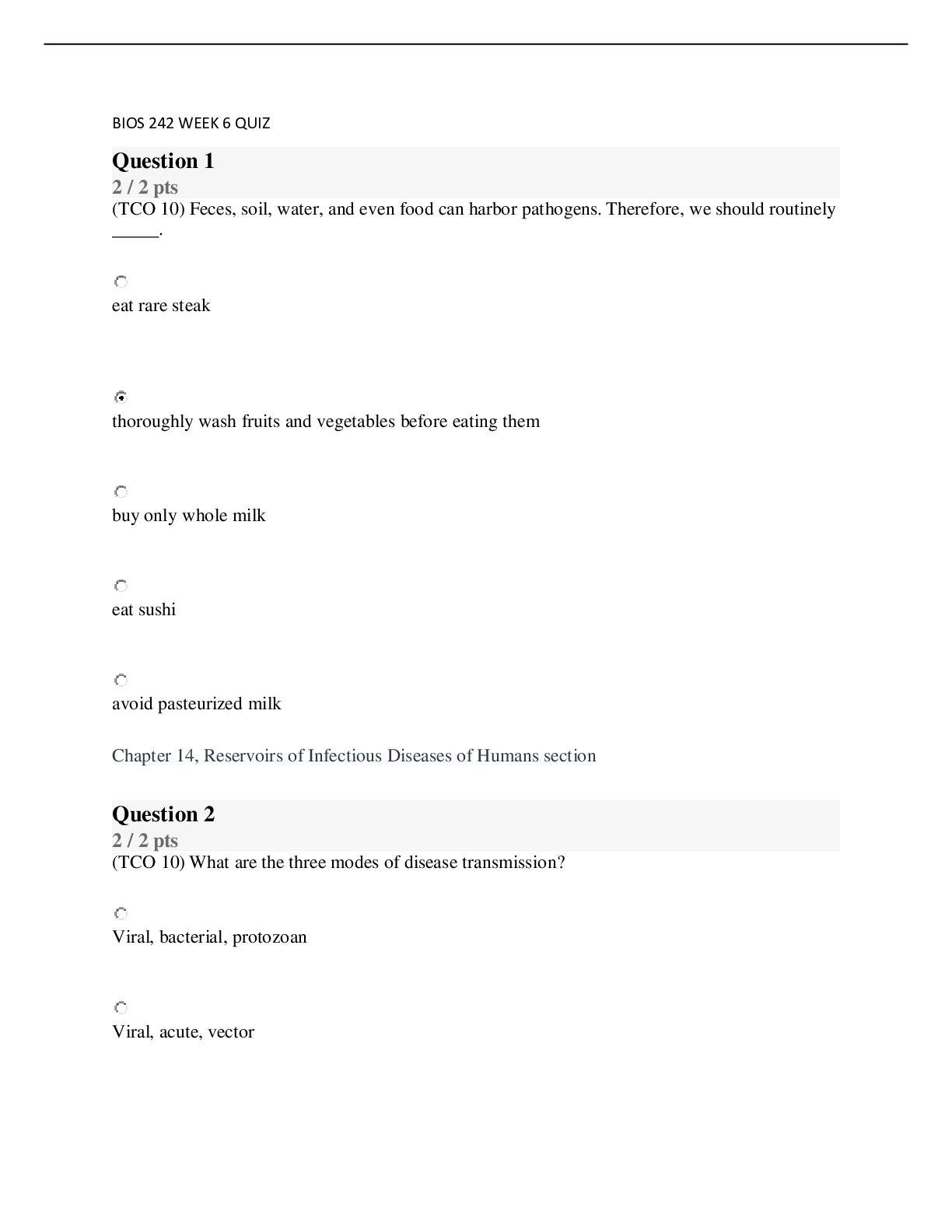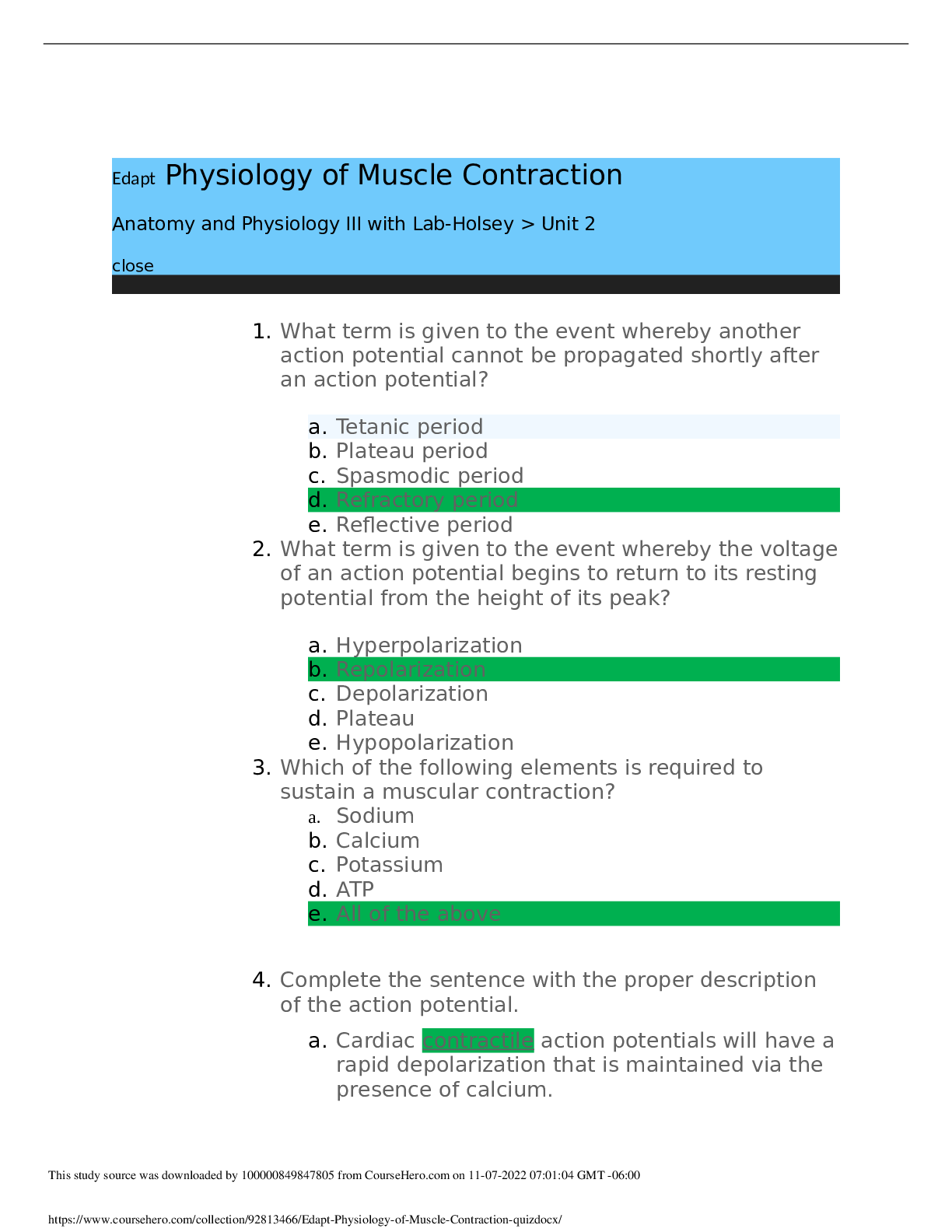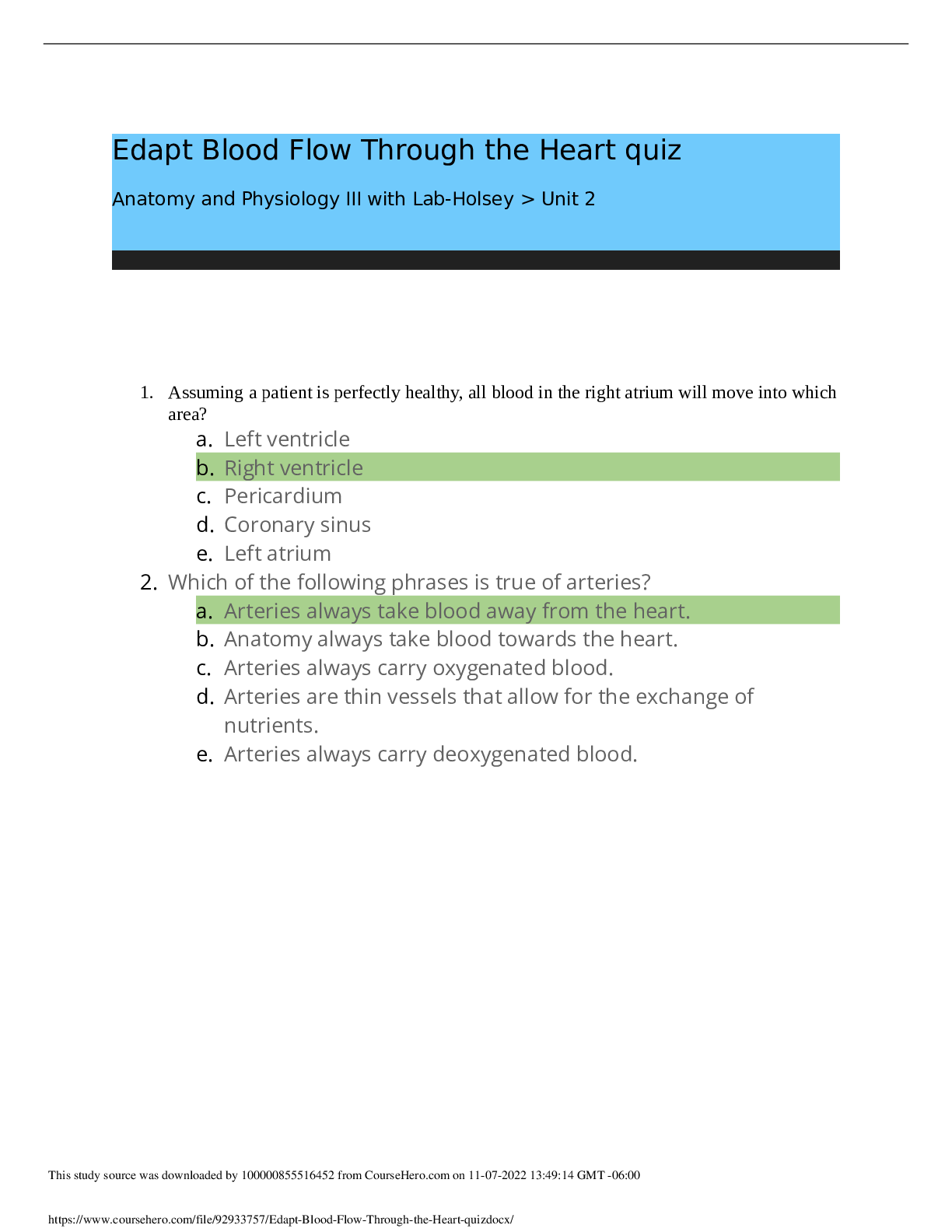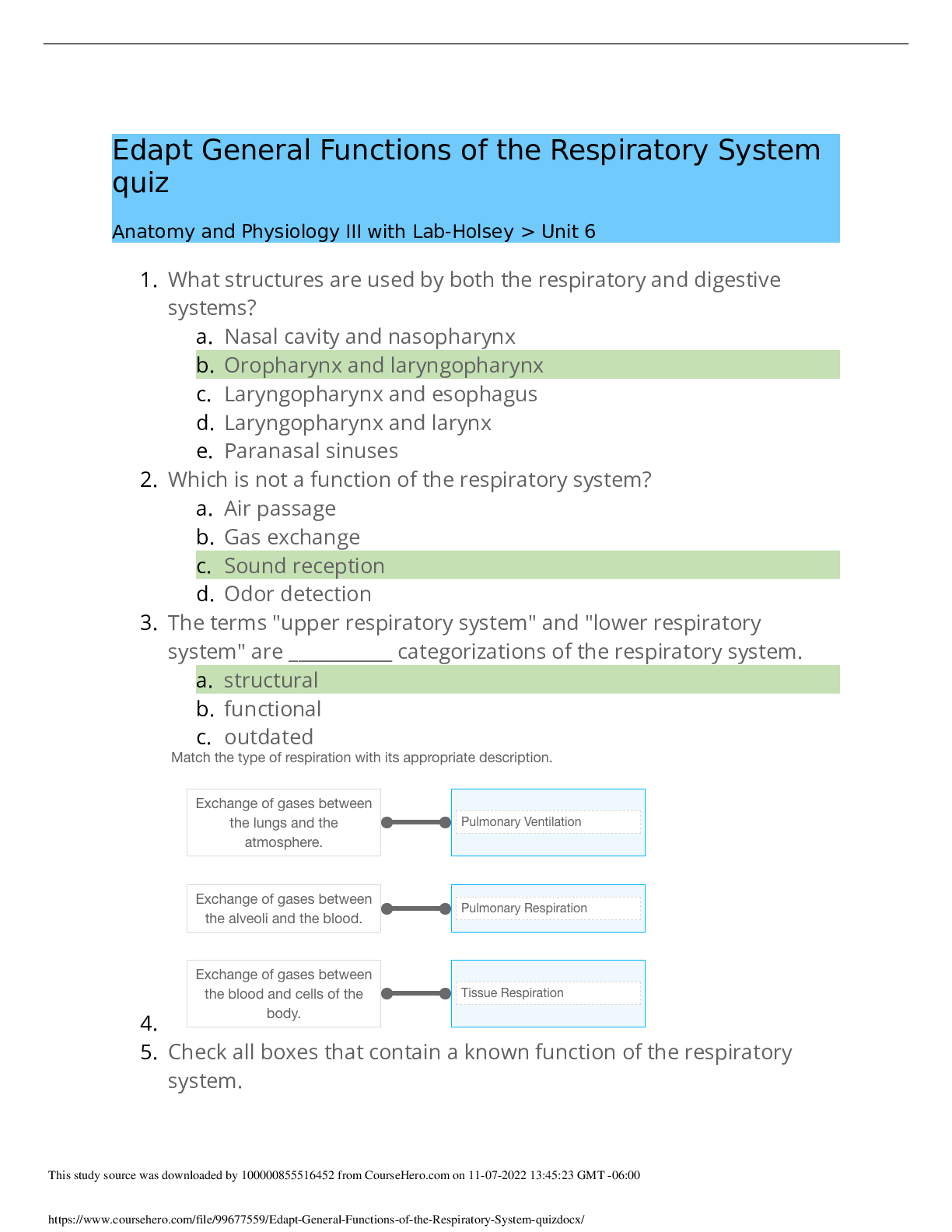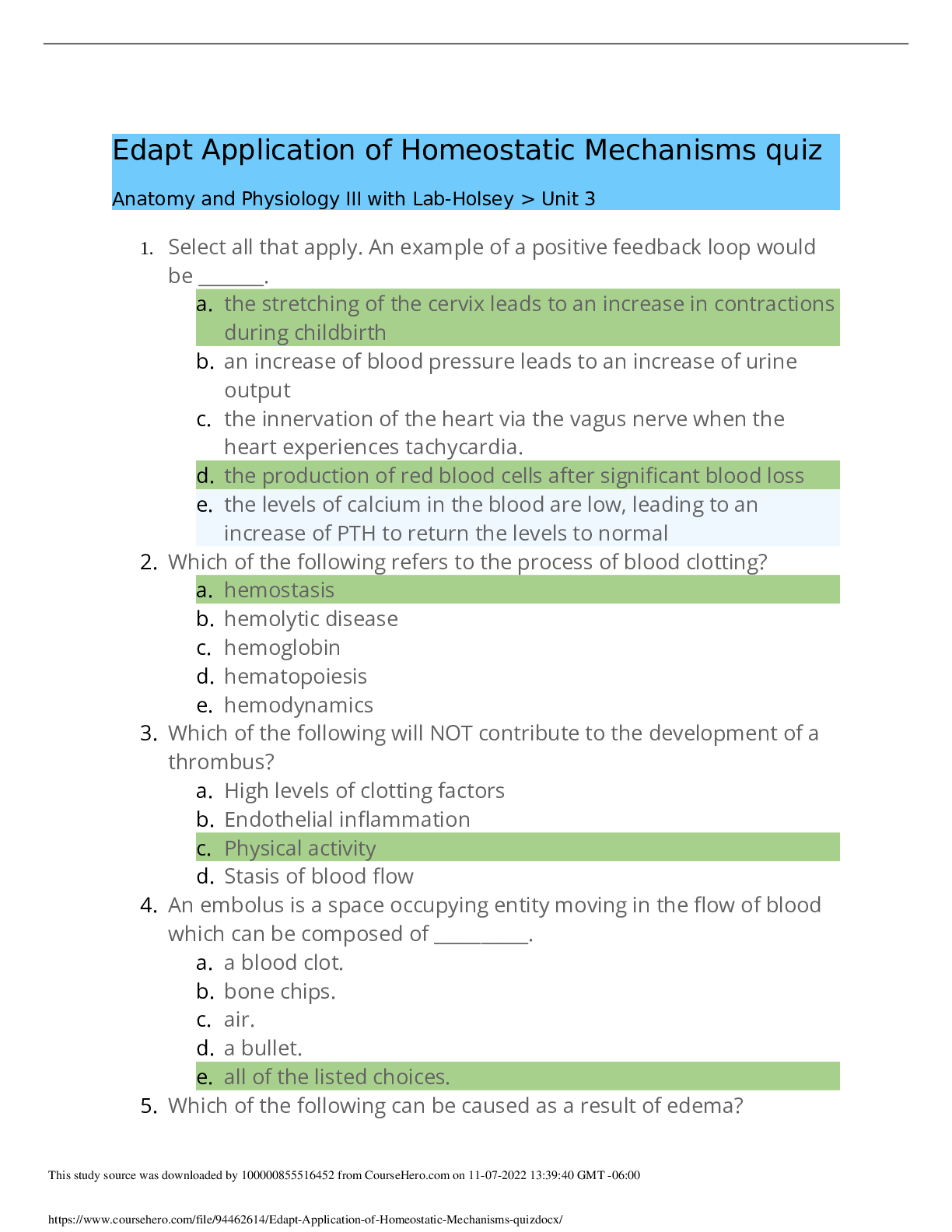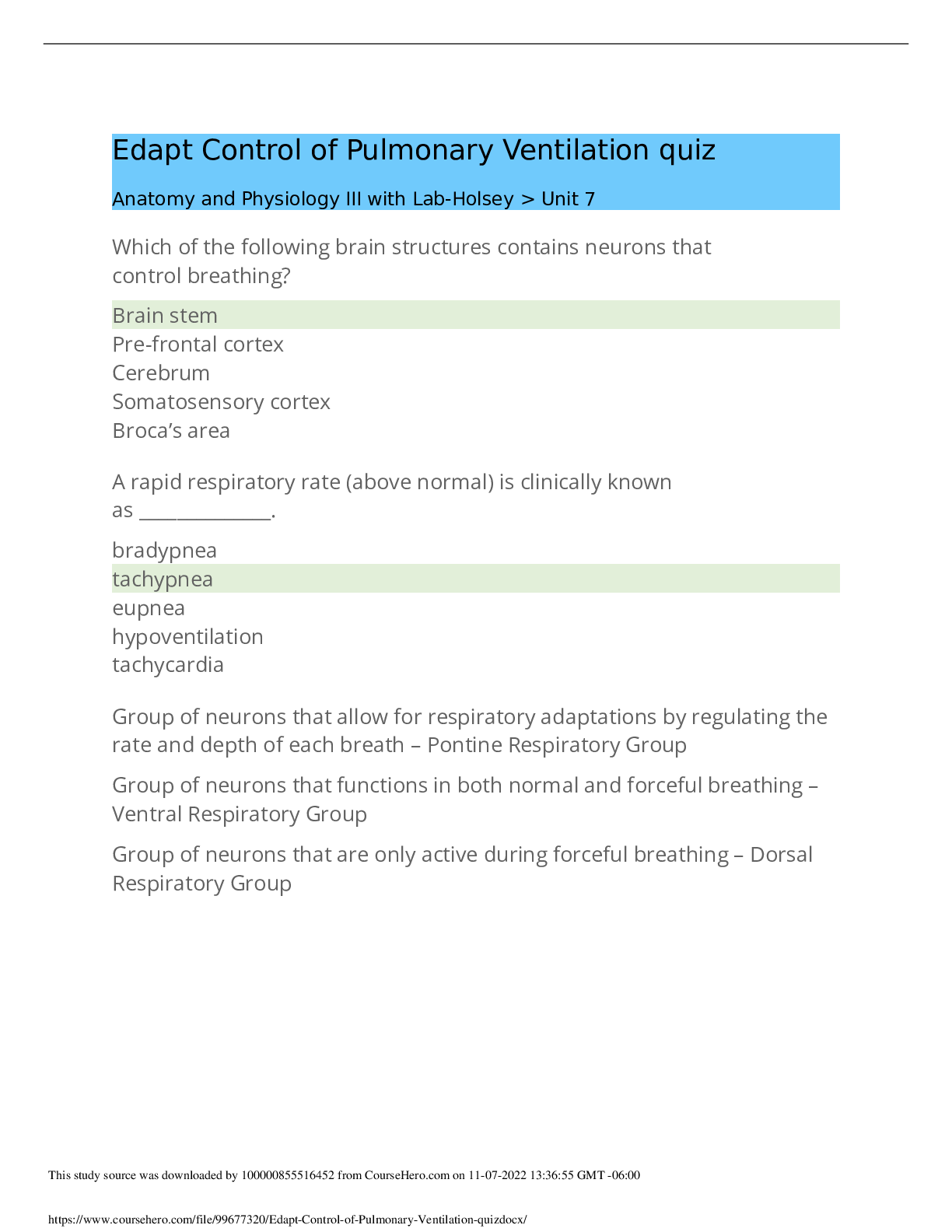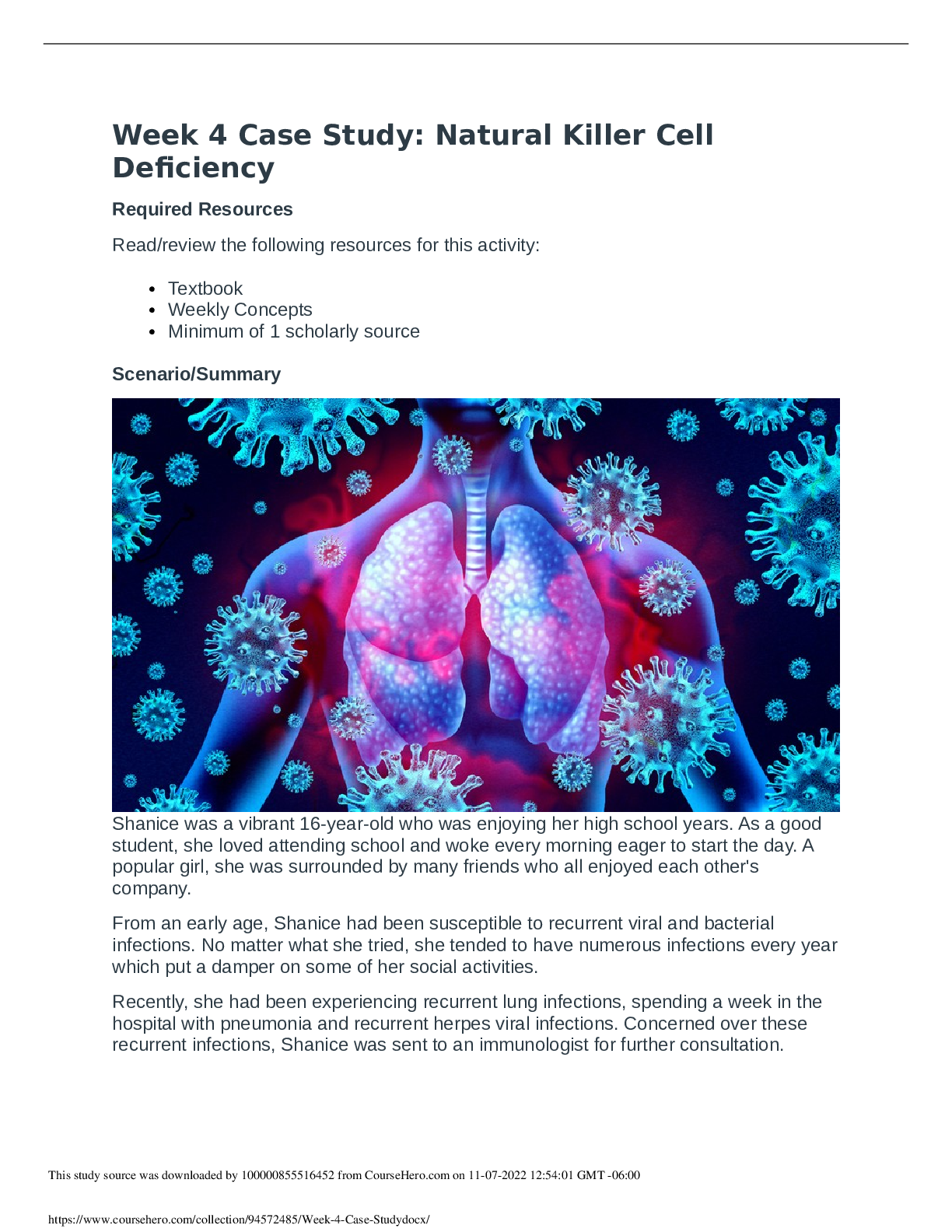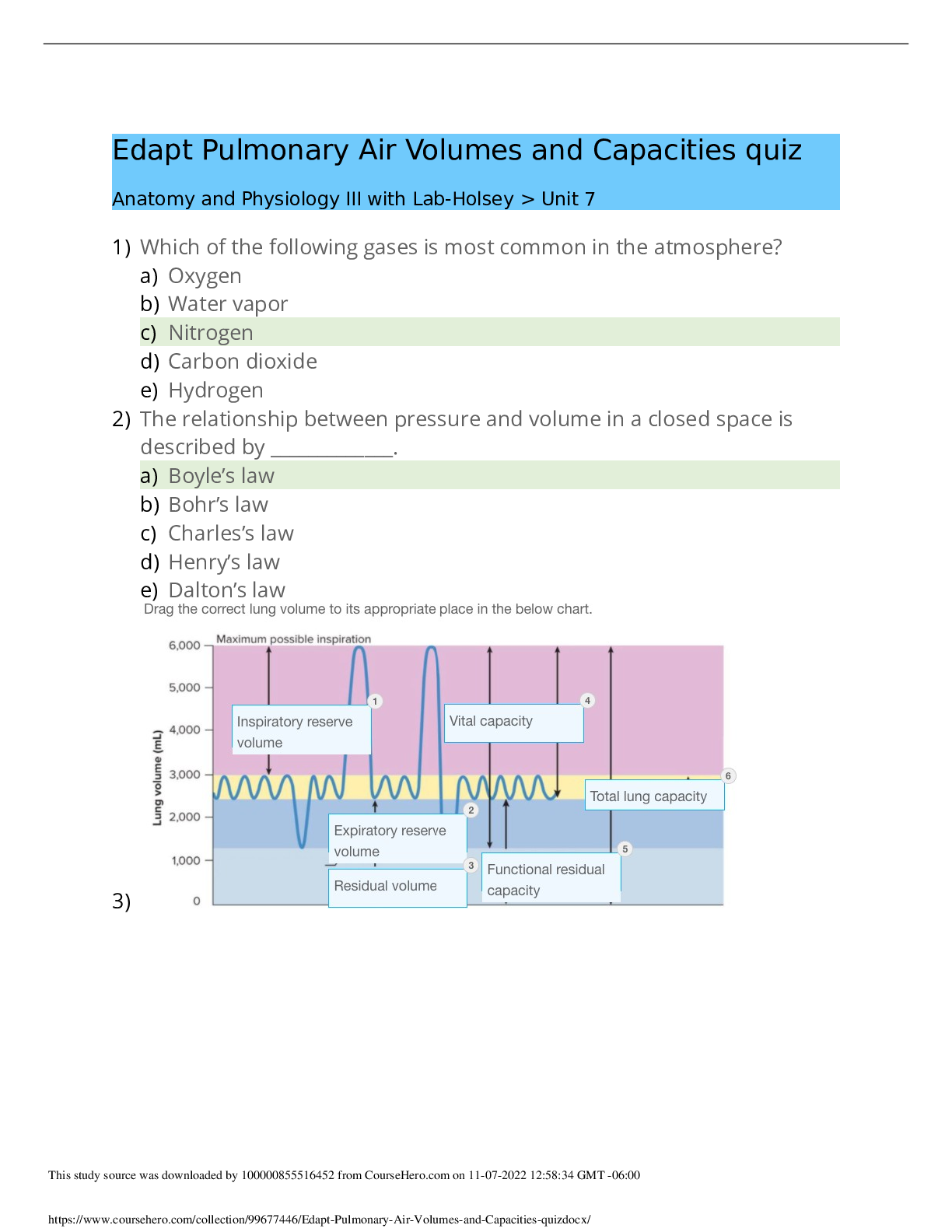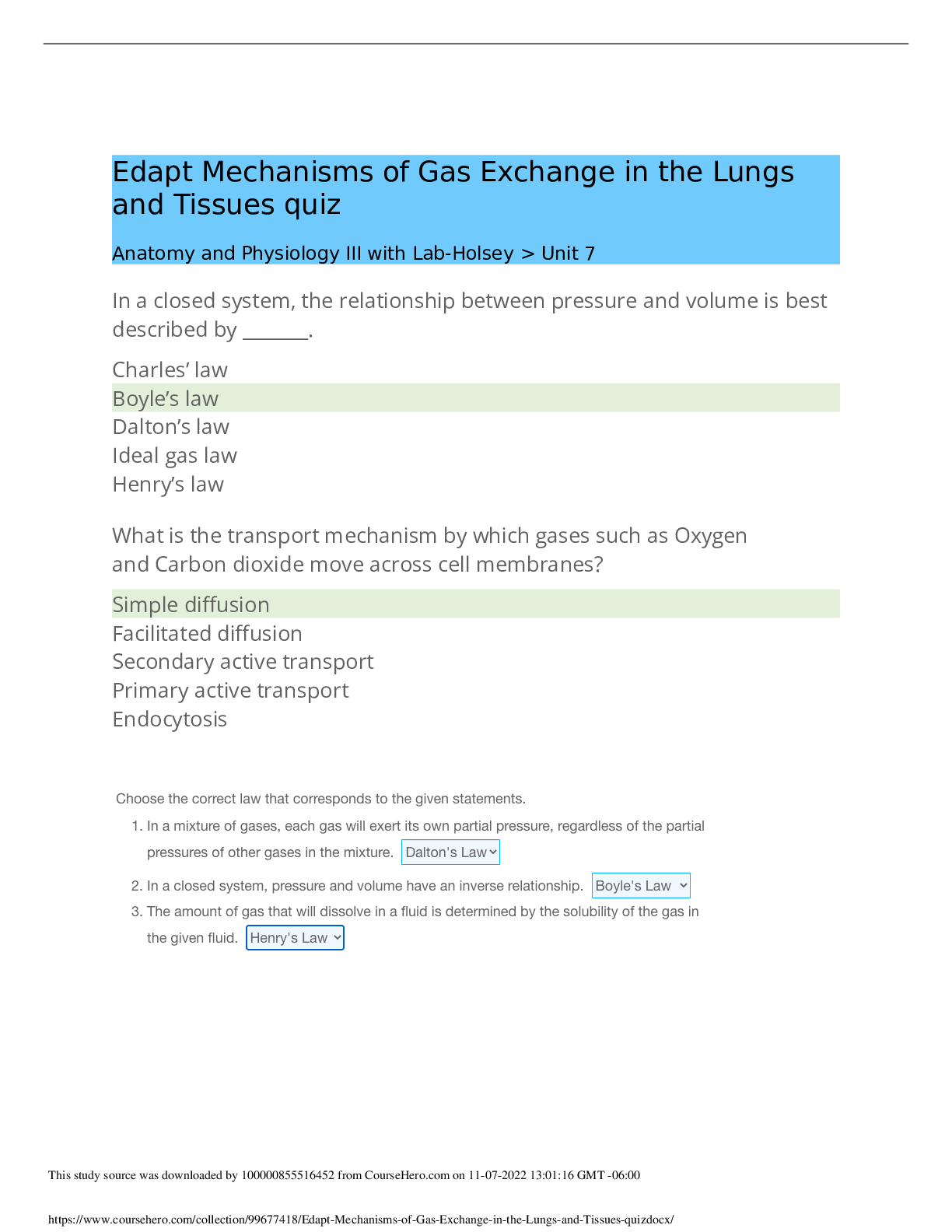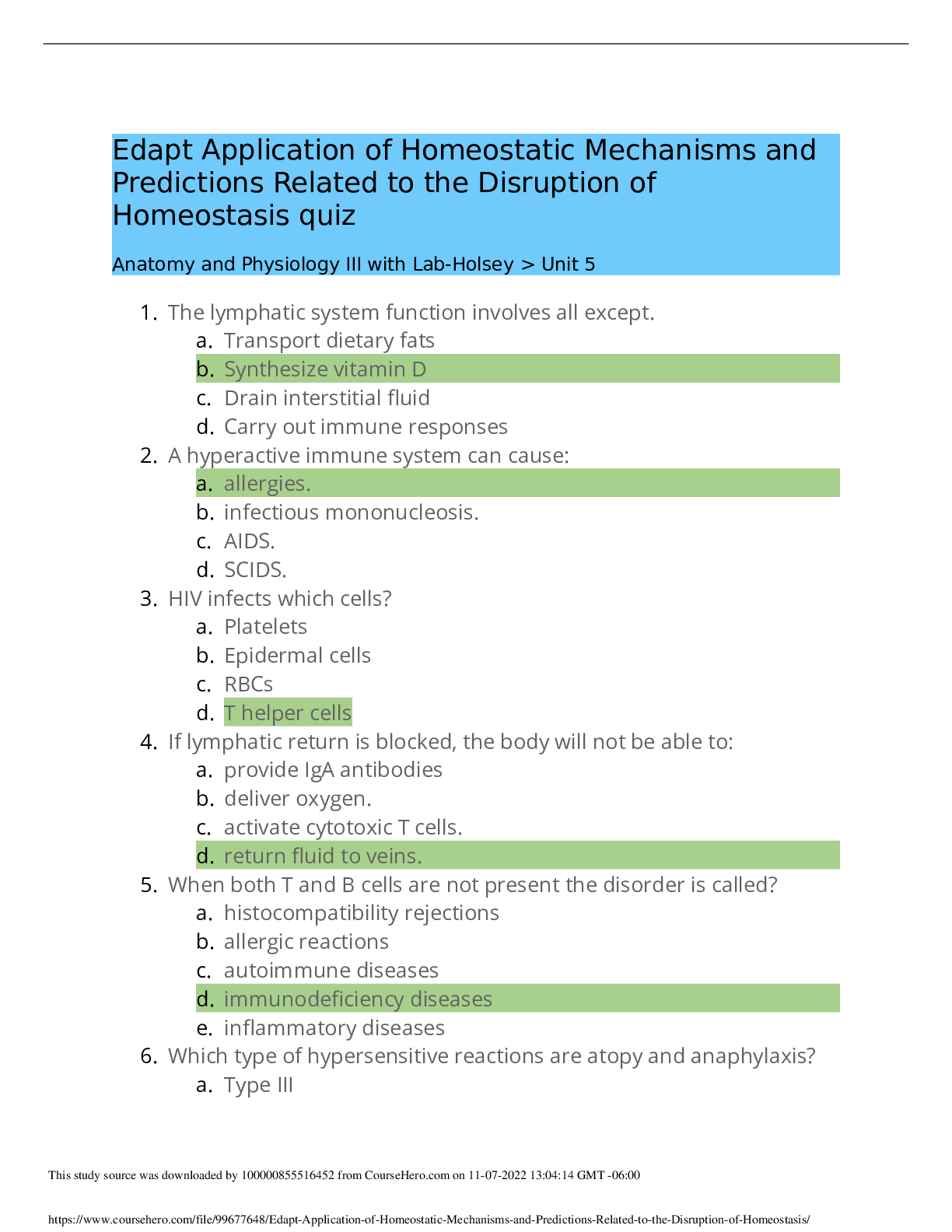*NURSING > QUESTIONS & ANSWERS > Chamberlain College of Nursing BIOS 255 Edapt Regulation of Cardiac Output, Stroke Volume, and Hear (All)
Chamberlain College of Nursing BIOS 255 Edapt Regulation of Cardiac Output, Stroke Volume, and Heart Rate Quiz Anatomy and Physiology III with Lab-Holsey > Unit 2
Document Content and Description Below
Chamberlain College of Nursing BIOS 255 Edapt Regulation of Cardiac Output, Stroke Volume, and Heart Rate Quiz Anatomy and Physiology III with Lab-Holsey > Unit 2 1. Which of the following woul... d NOT increase heart rate? a. Becoming anxious before an exam b. Increasing blood calcium c. Running 2 miles d. Receiving an injection of epinephrine e. Innervation by the vagal nerve 2. Which of the following regions of the brain is necessary for vital life functions? a. Cerebellum b. Frontal lobe c. Insula lobe d. Limbic system e. Medulla oblongata 3. Determine the cardiac output of a patient with a heart rate of 80 beats/min with a stroke volume of 75 mL/beat. a. _______6_________L/min 4. Determine the cardiac output of a patient with a heart rate of 80 beats/min with an end diastolic pressure of 80 mL and an end systolic pressure of 120 mL. a. 3.2L/min 5. 6. 7. 8. 9. 10. As blood pressure increases, the volume of blood brought to the left ventricle will increase, stretching it more than typical, leading to an increase in stroke volume. This is an example of ______________. a. cardiac reserve b. contractility c. preload d. afterload e. cardiac output 11. Schwannomas are due to tumor formation within the Schwann cells of the peripheral nervous system. When they occur in the neck, removal is difficult due to the possibility of severing a cranial nerve responsible for parasympathetic activity in the heart. What is this cranial nerve? a. Glossopharyngeal b. Trigeminal c. Vagal d. Accessory e. Cardiac accelerator nerve 12. A patient with a heart rate of 88 beats per minute has an end systolic volume of 70 mL and an end diastolic volume of 150 mL. Determine the cardiac output in L/min. Your answer should be rounded to the nearest 10th, and ensure you use the proper units. a. ____5.3____ L/min 13. What variable(s) determine the effects of cardiac output? a. Only a conduction system change b. Only change in heart rate c. Changes to both HR and SV d. Only change in stroke volume e. Changes to HR, SV, and rearrangement of the conduction system 14. The difference between the maximum and resting cardiac output is called ____________. a. cardiac reserve b. preload c. stroke volume d. afterload e. contractility [Show More]
Last updated: 1 year ago
Preview 1 out of 5 pages
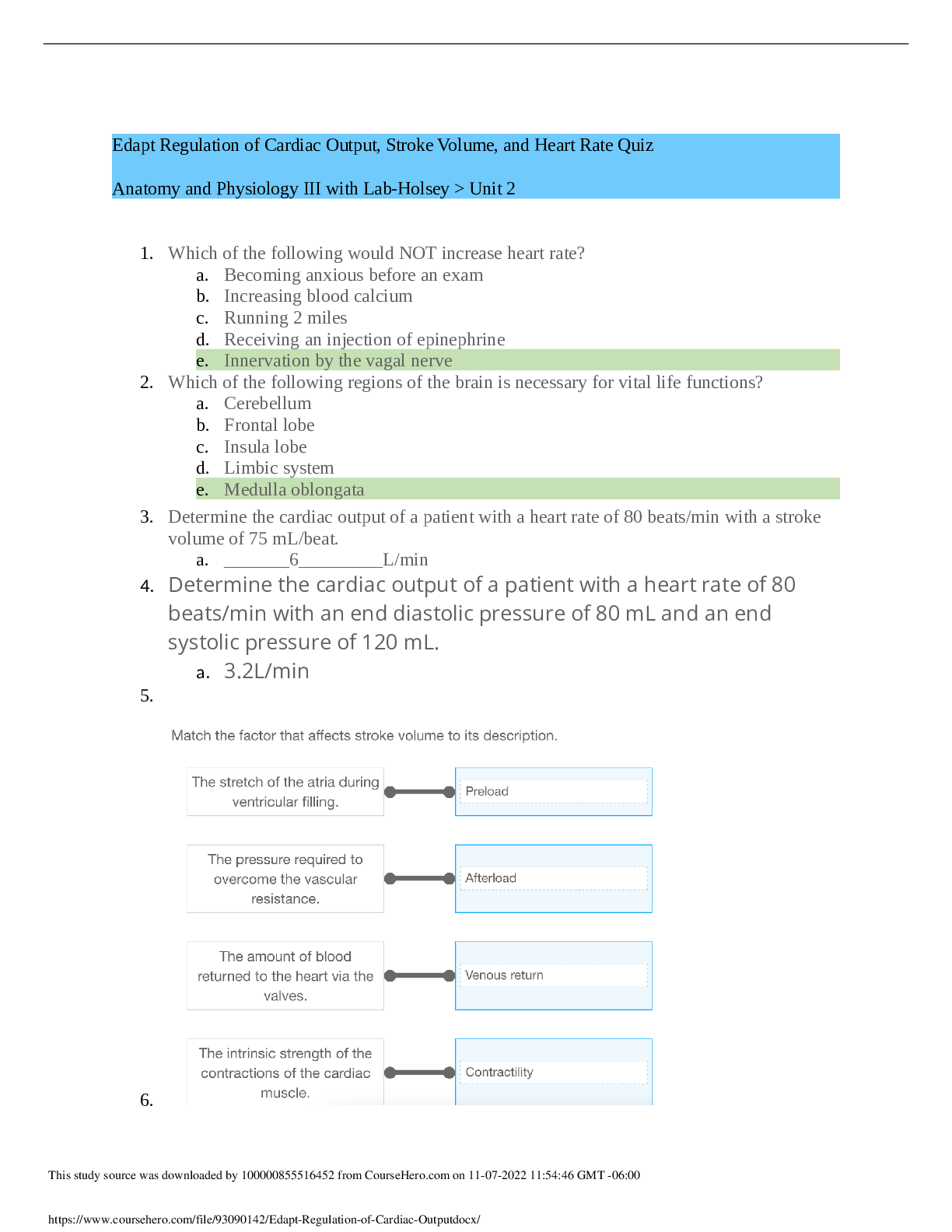
Reviews( 0 )
Document information
Connected school, study & course
About the document
Uploaded On
Nov 07, 2022
Number of pages
5
Written in
Additional information
This document has been written for:
Uploaded
Nov 07, 2022
Downloads
0
Views
40

